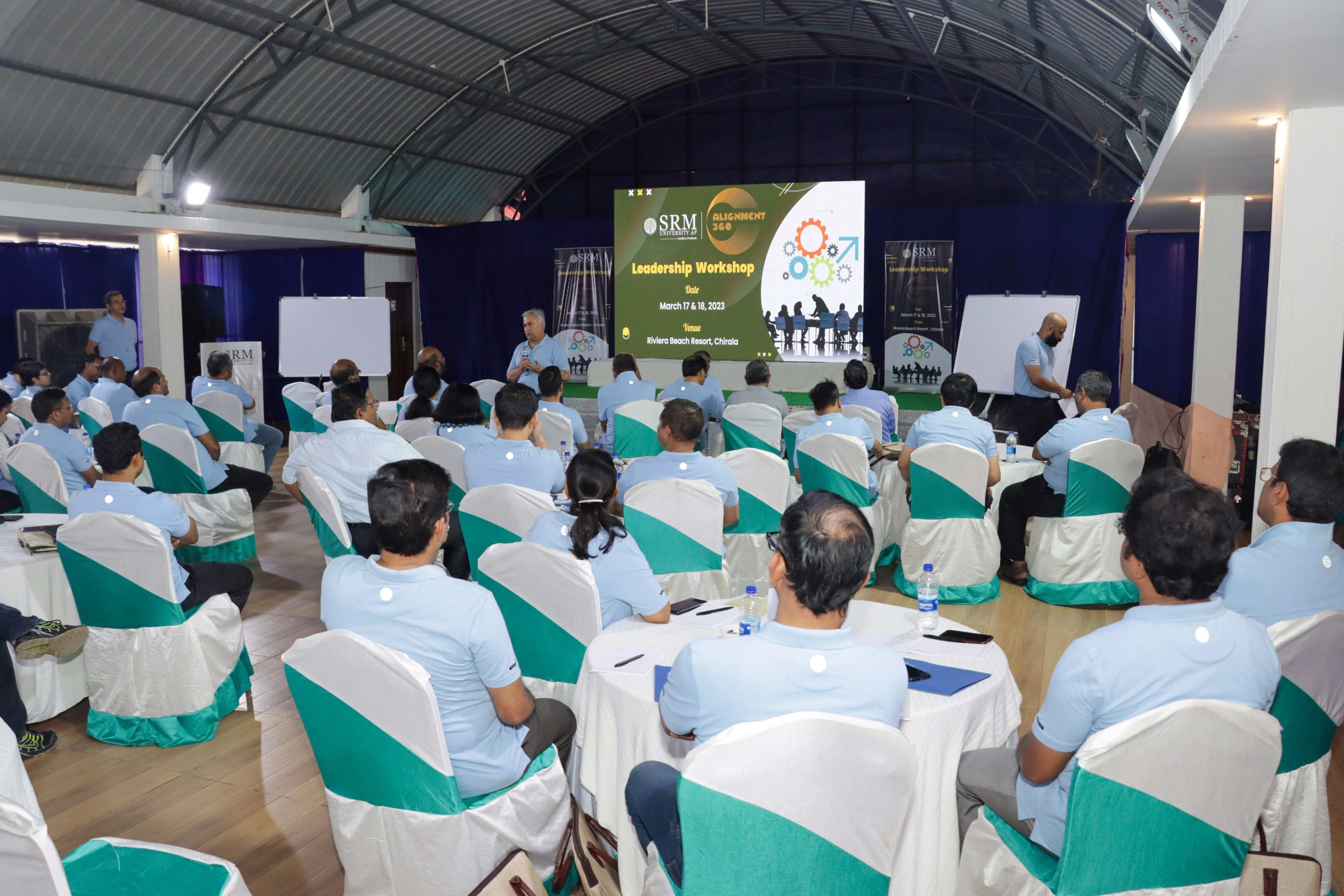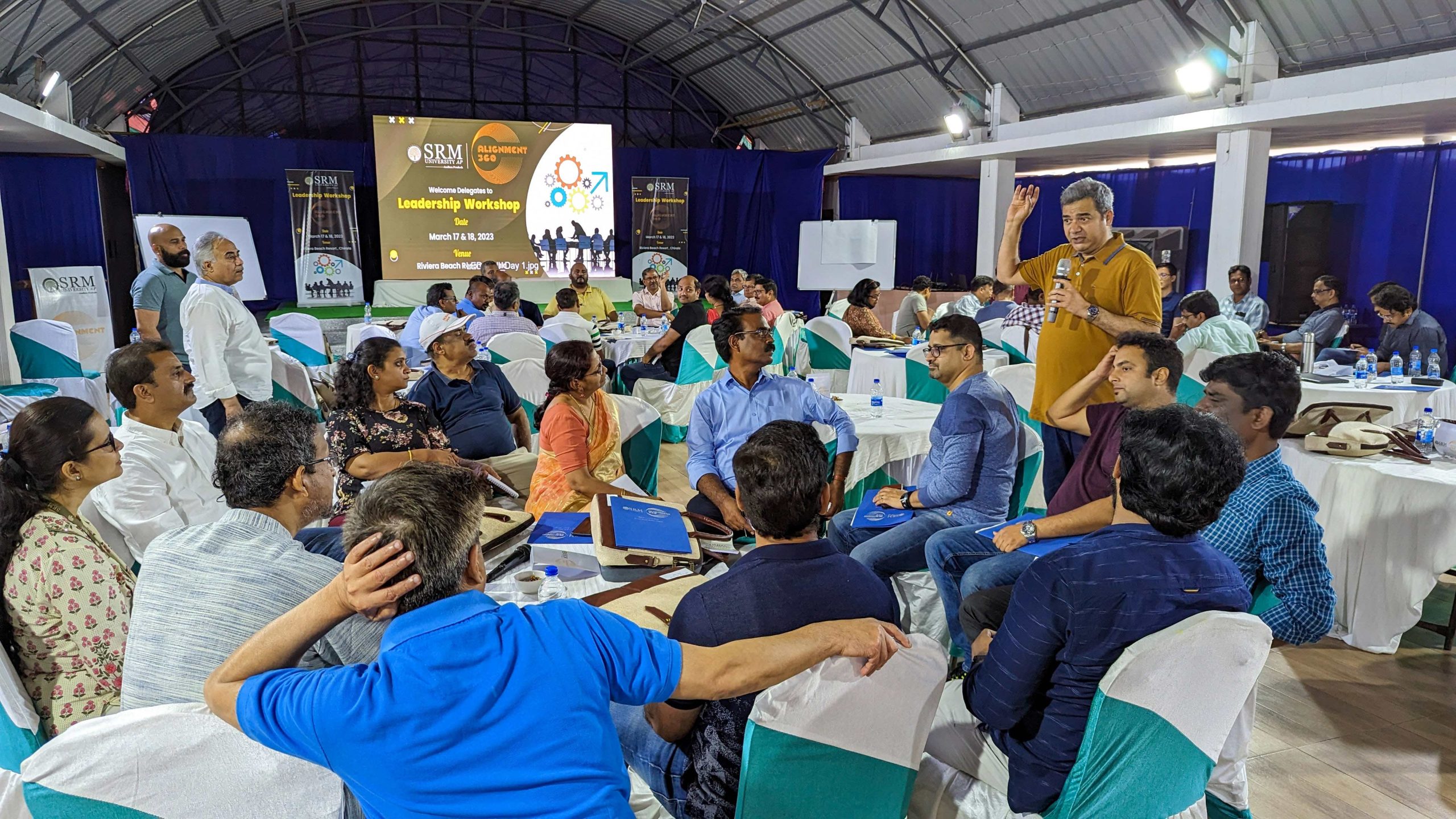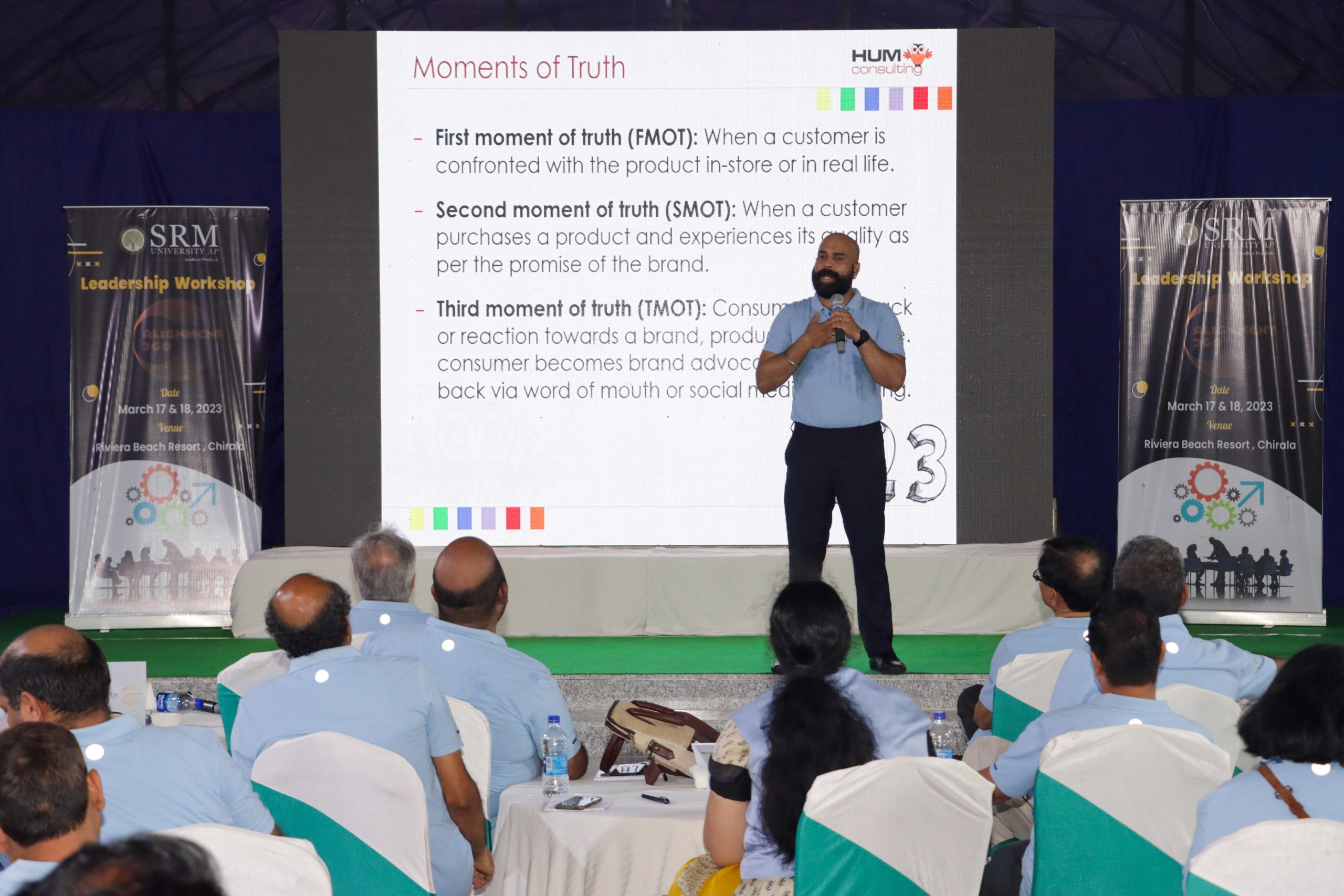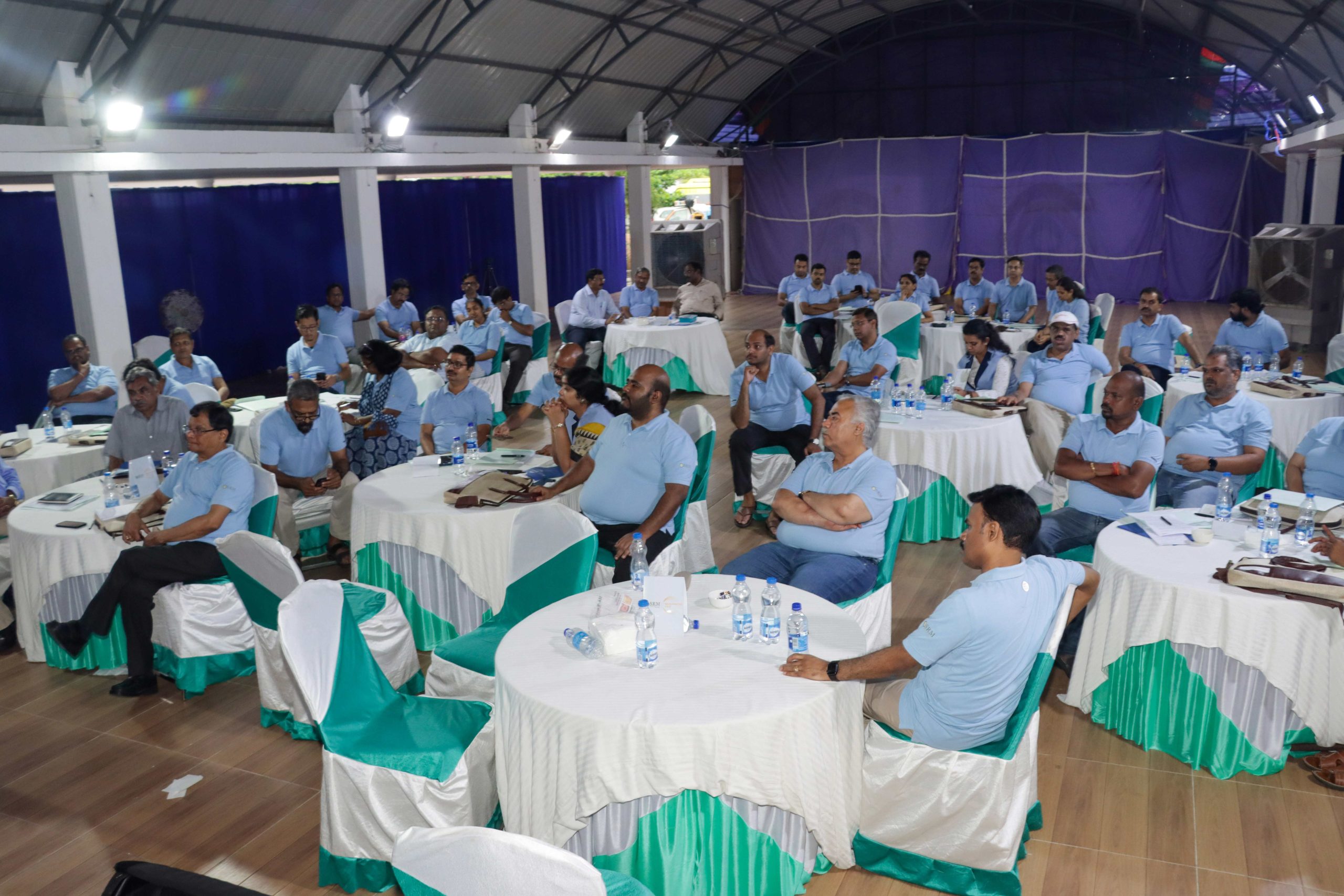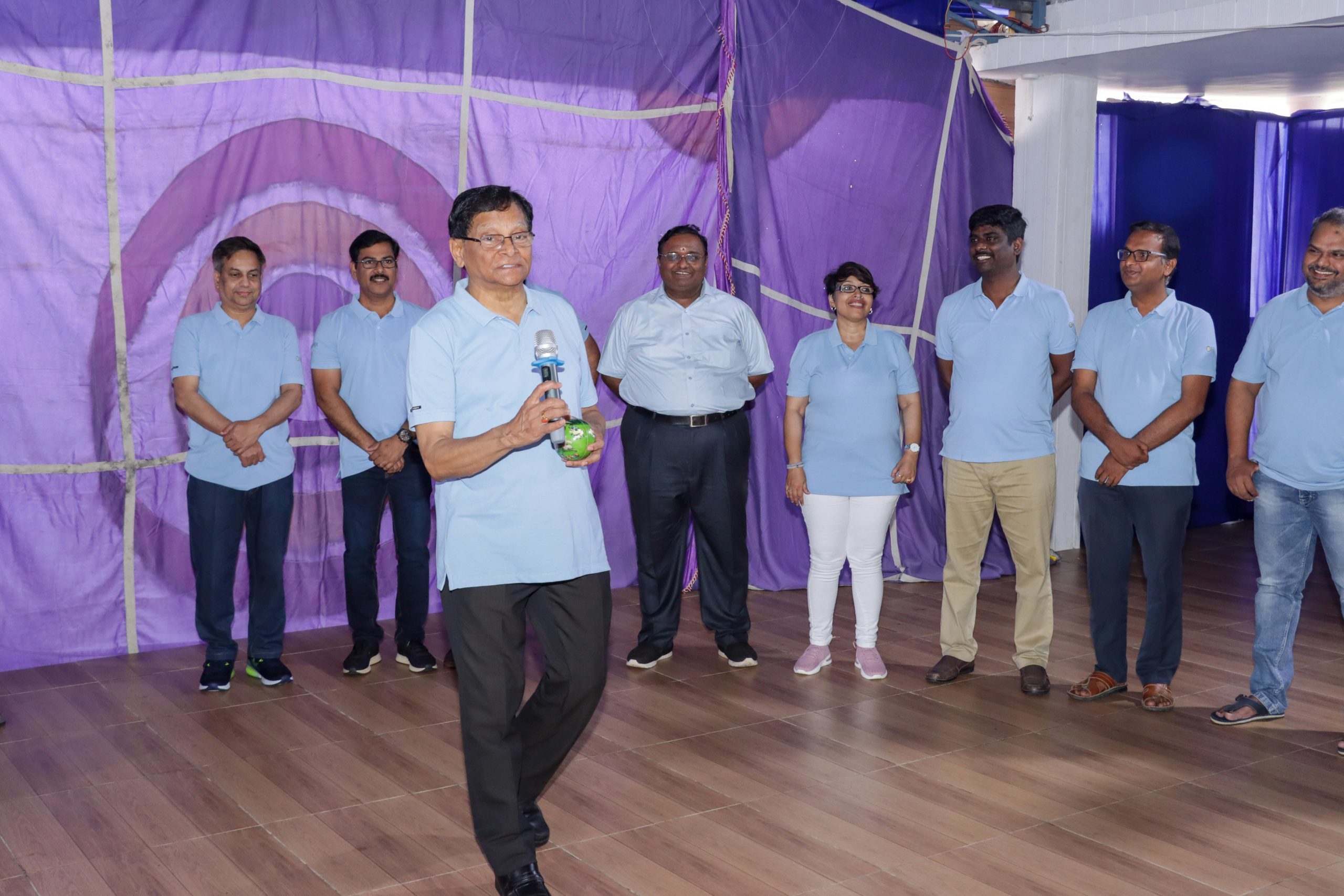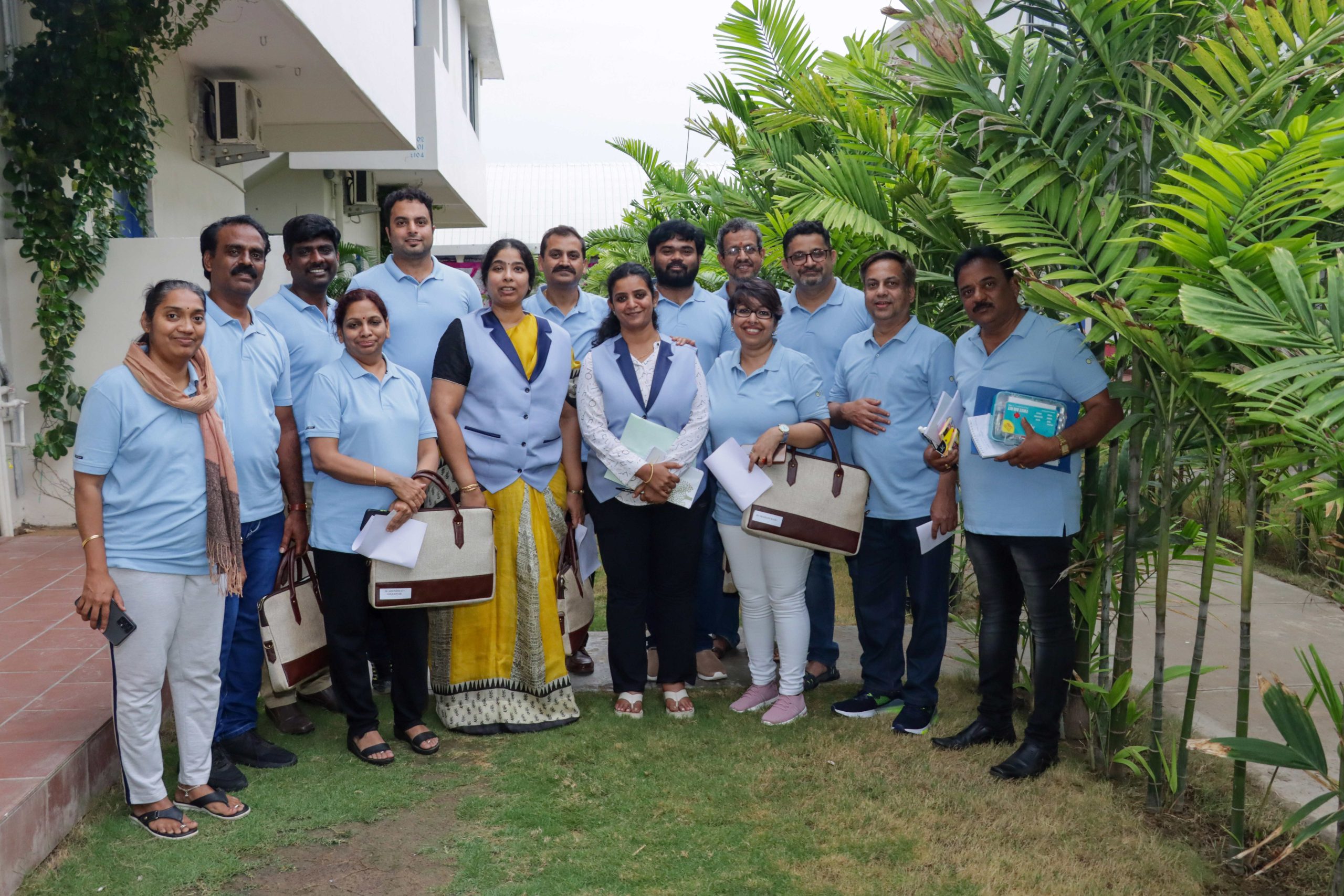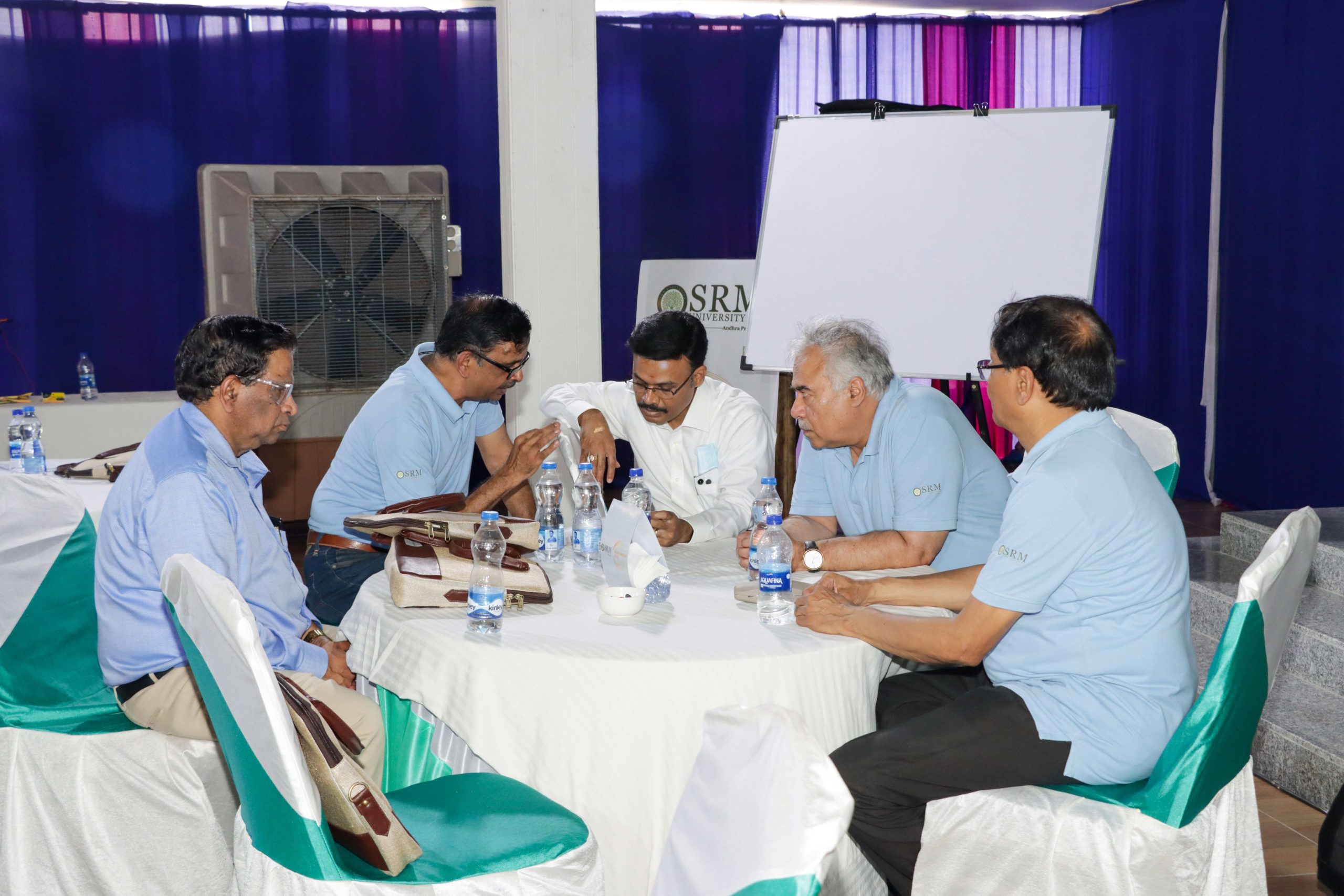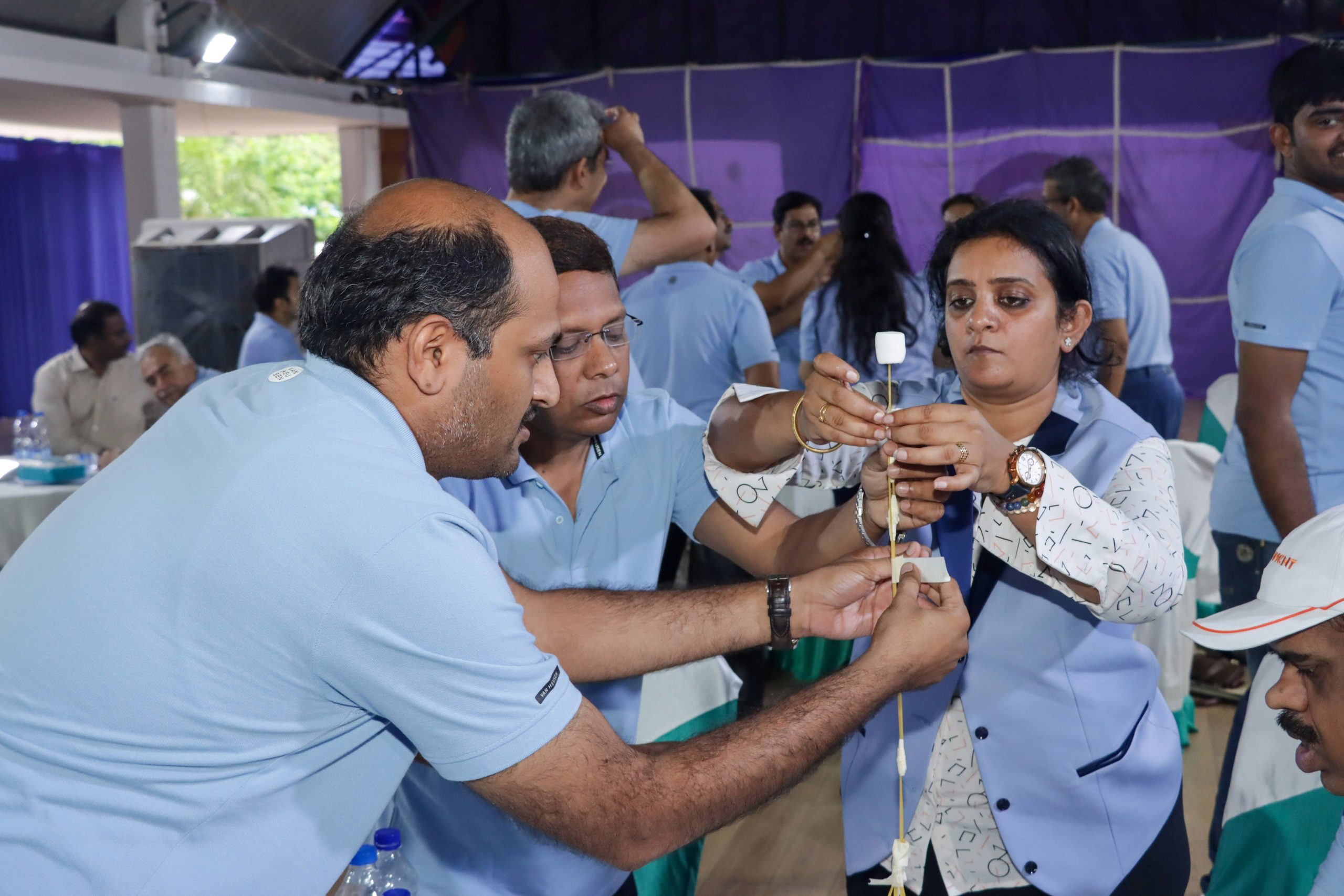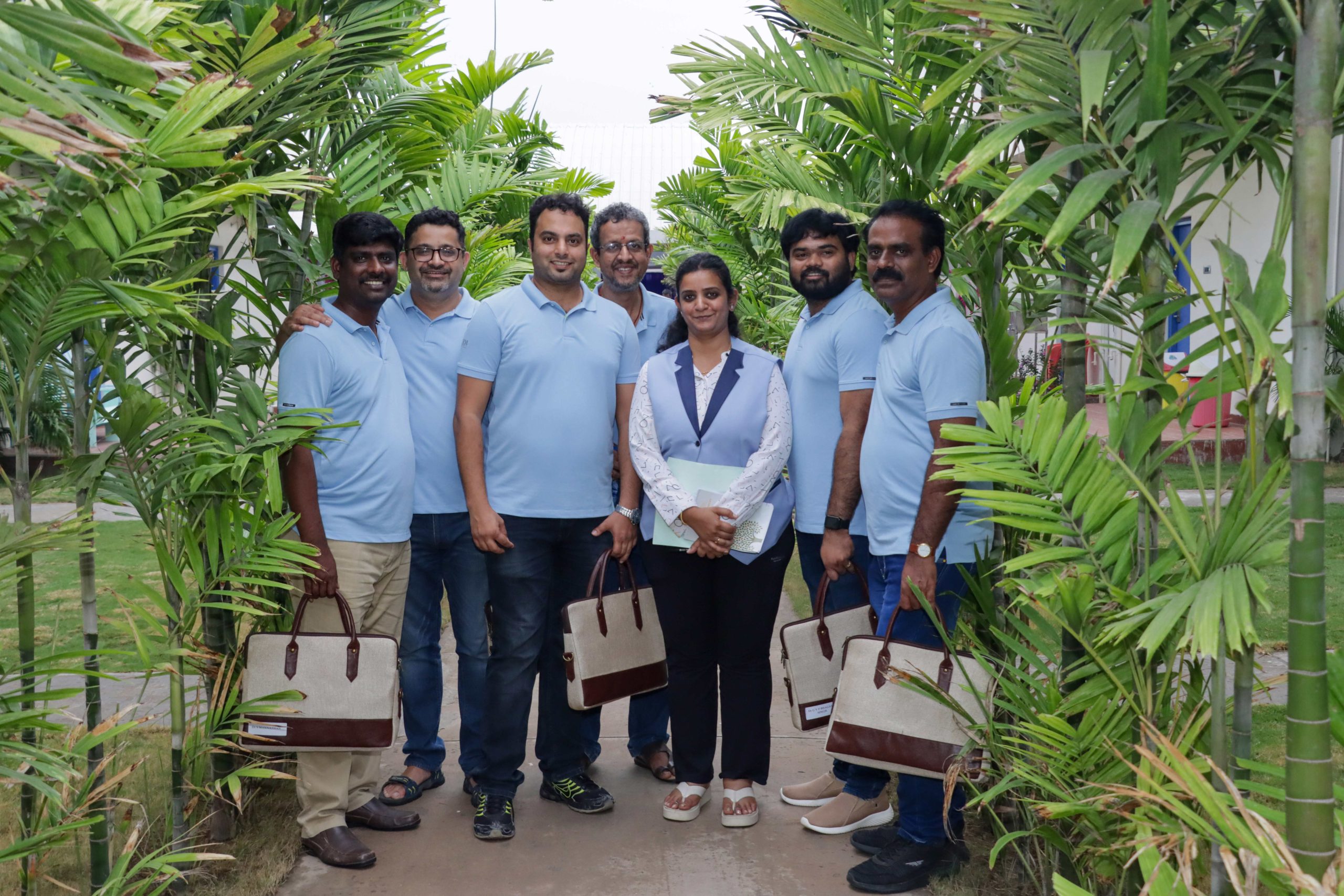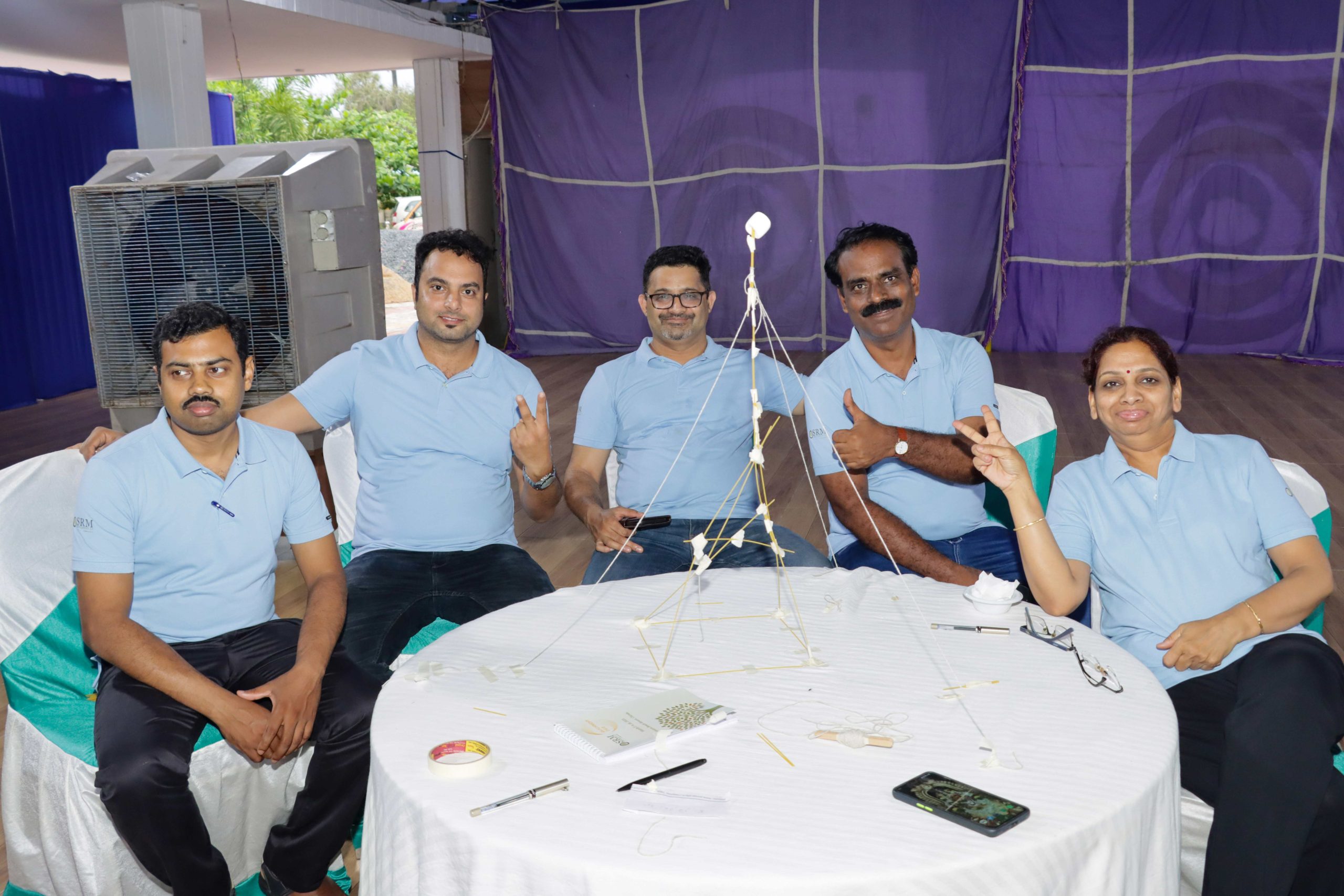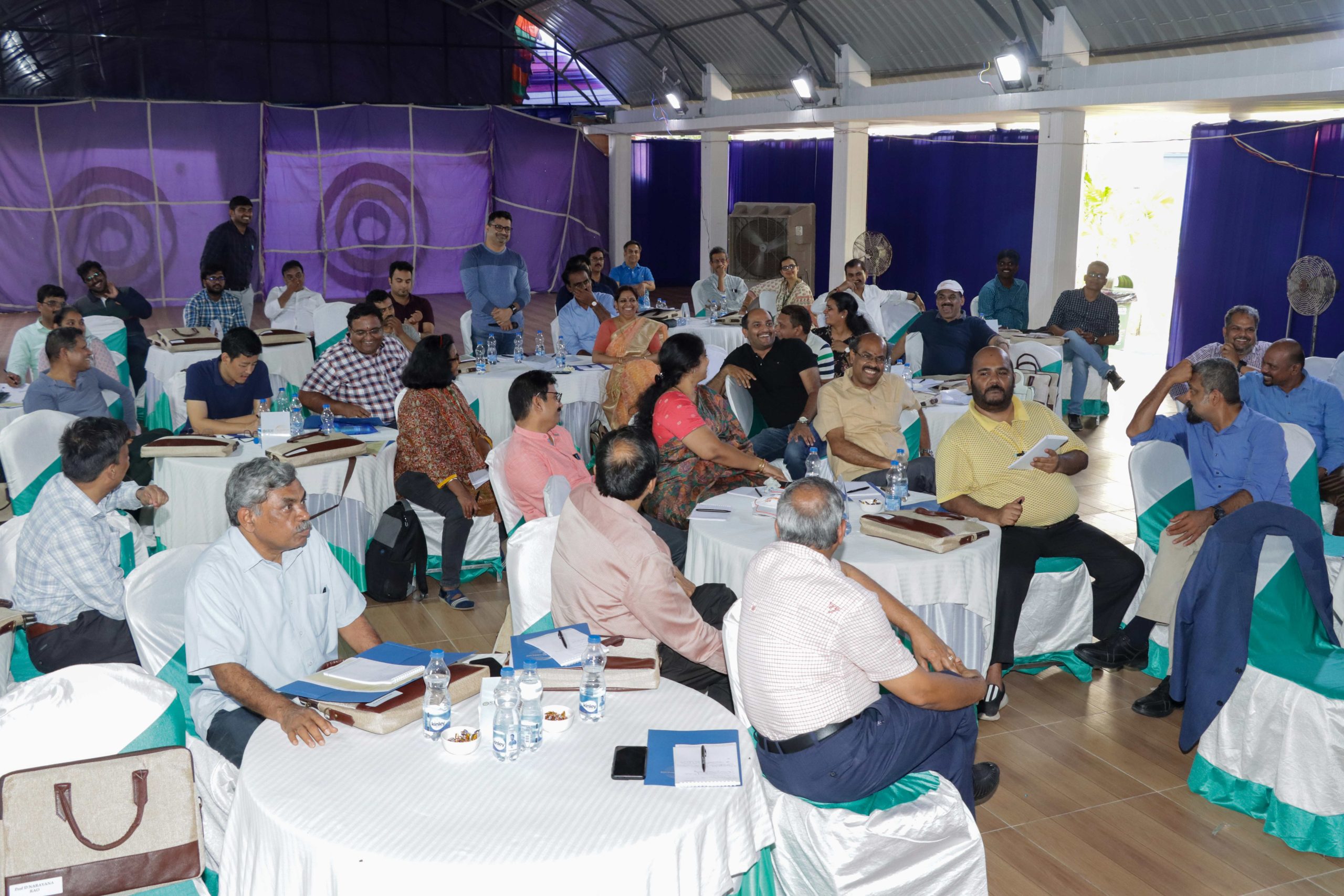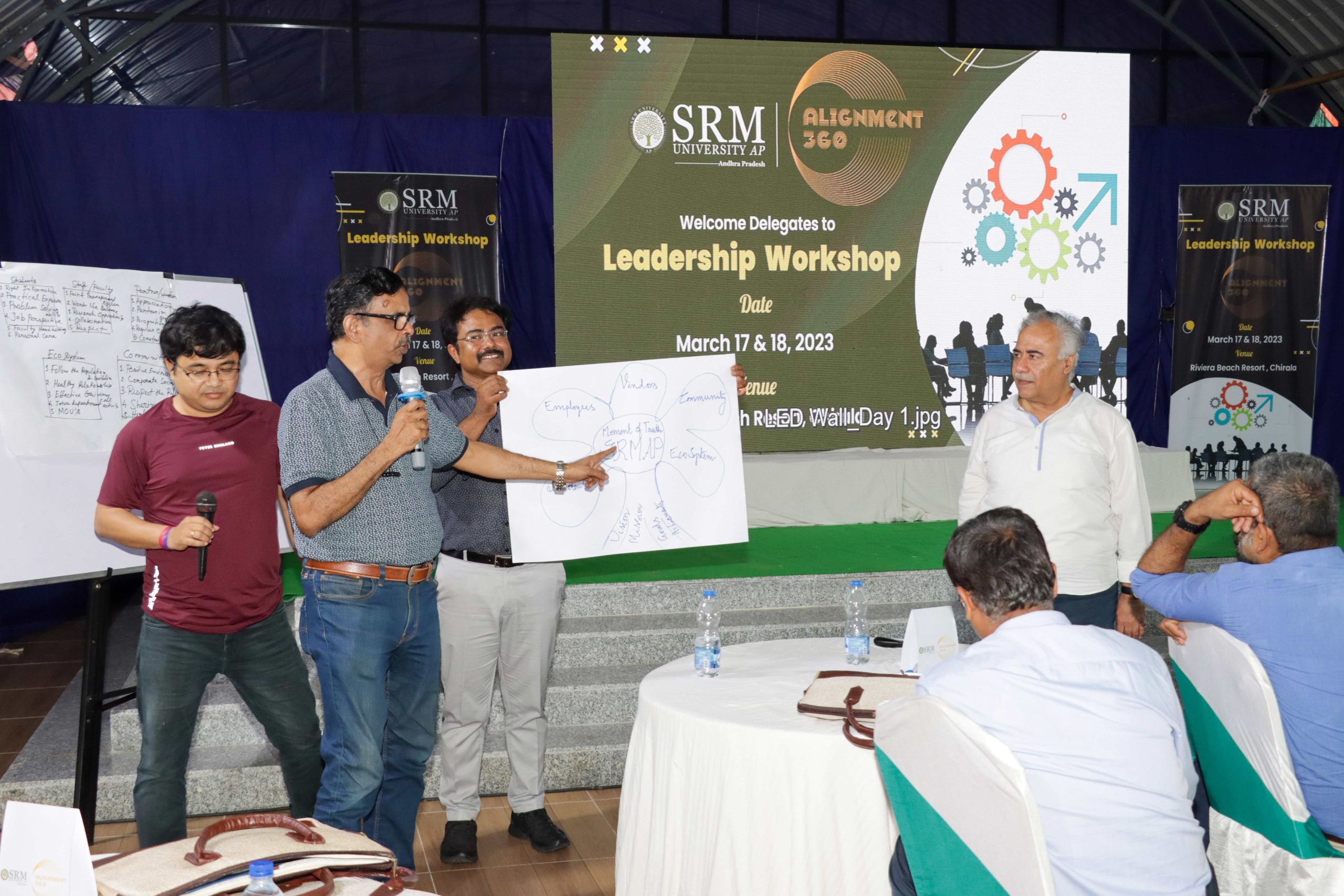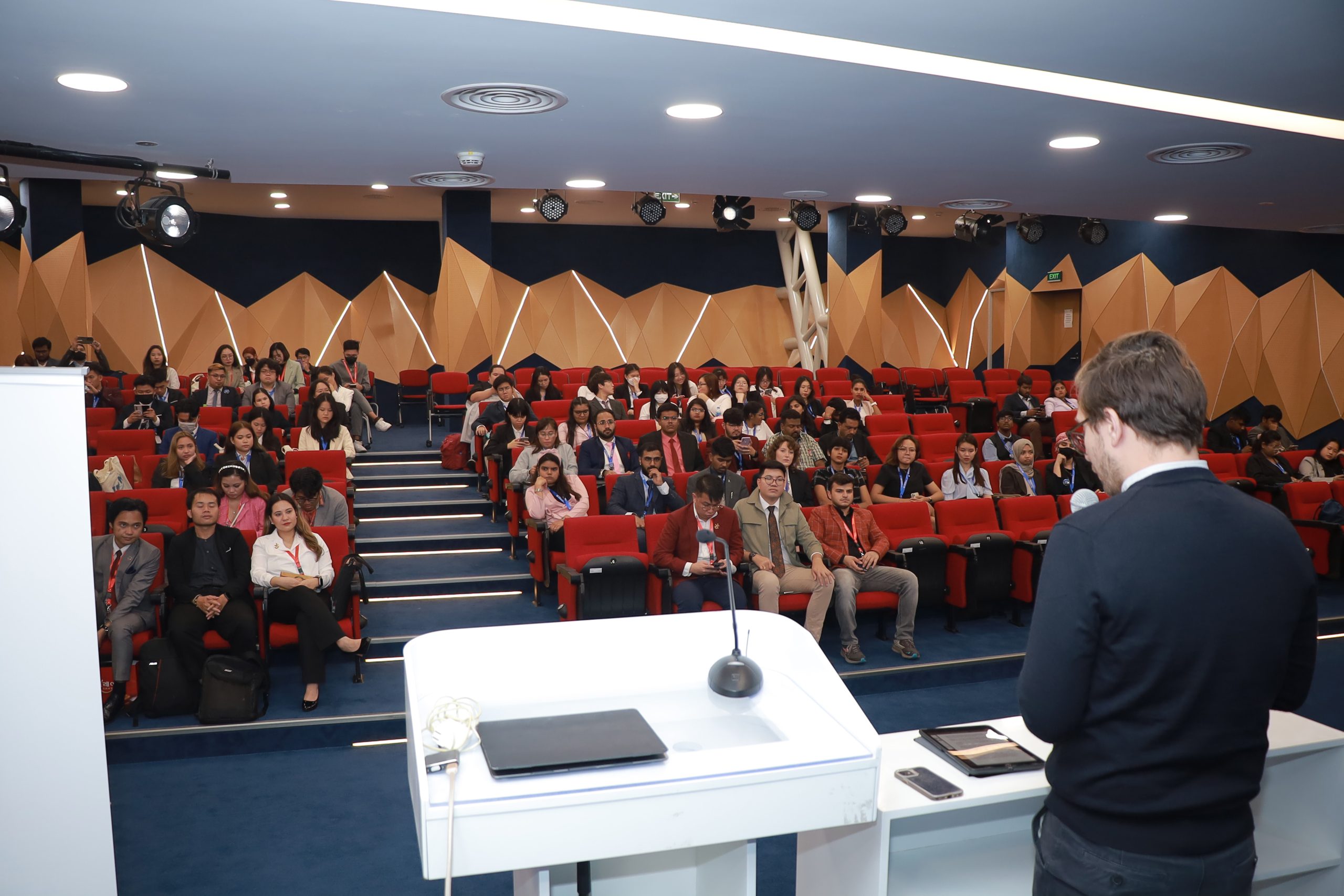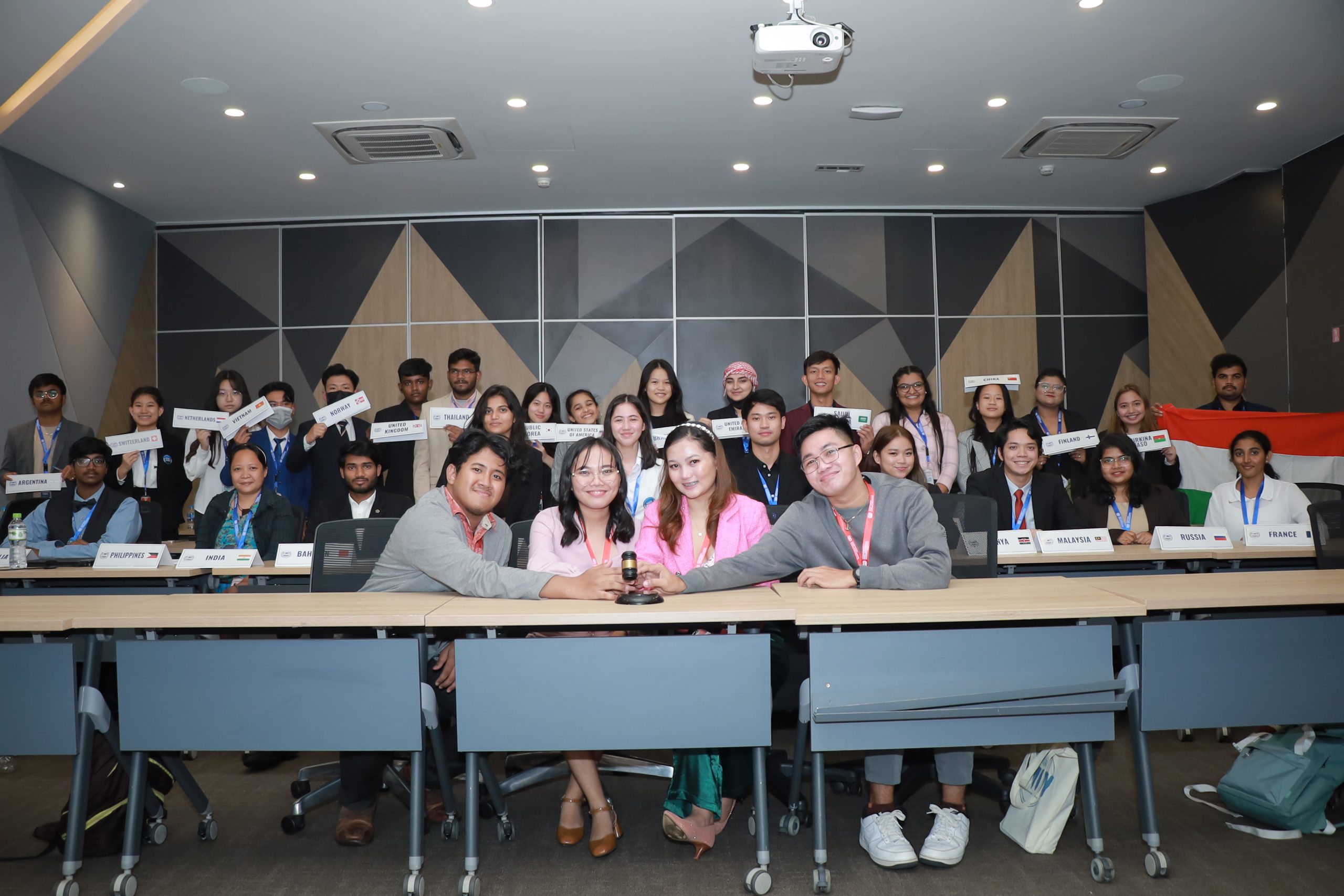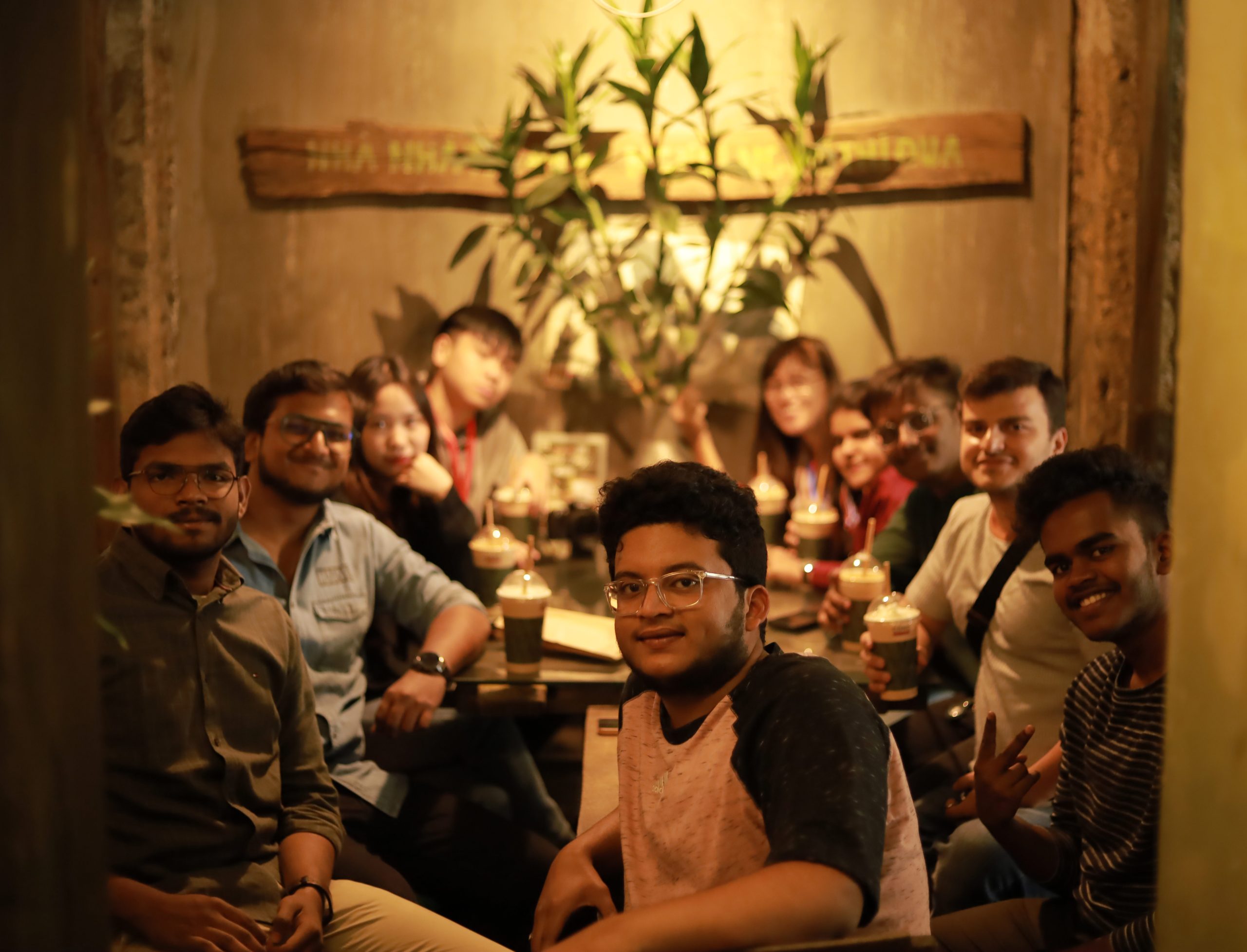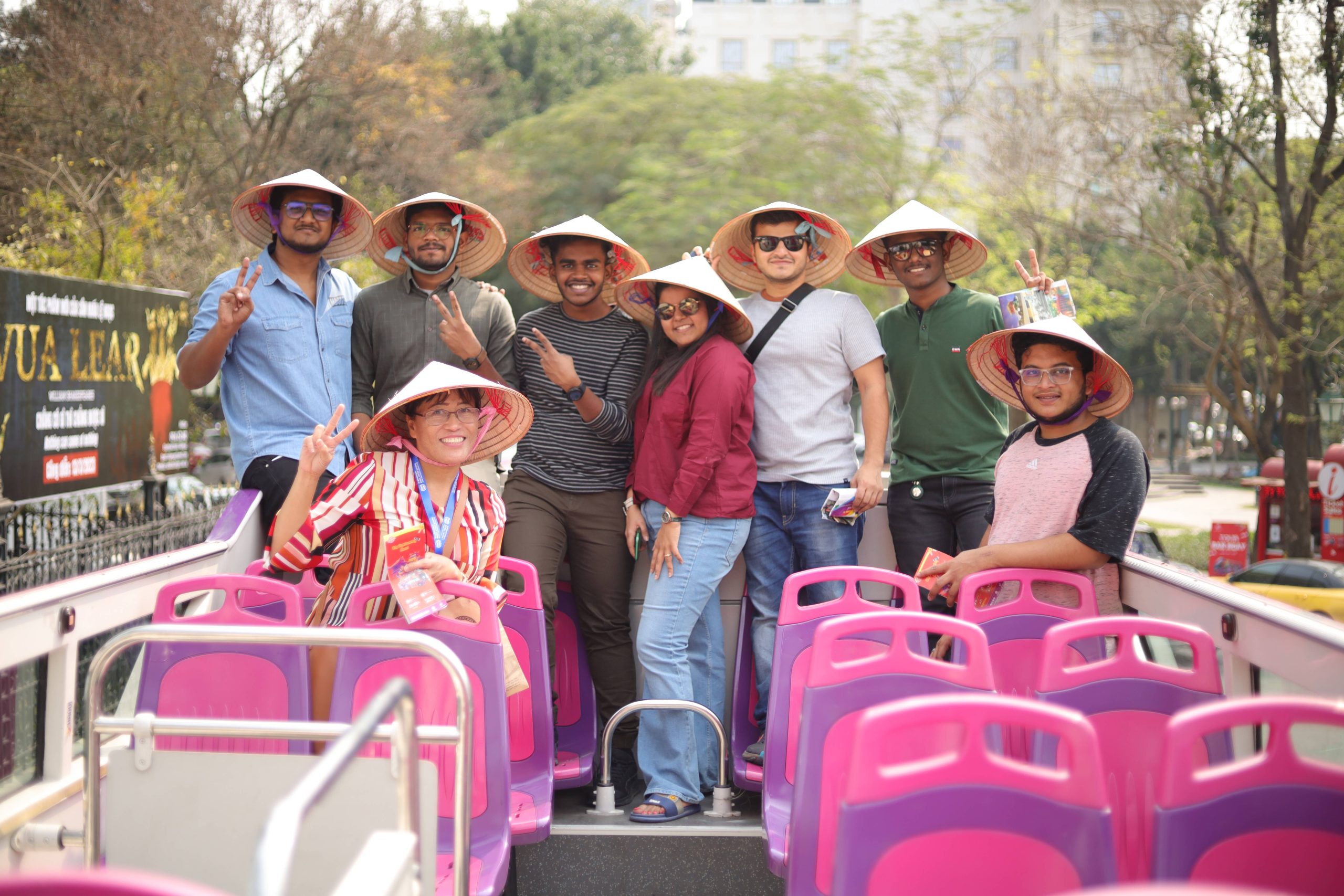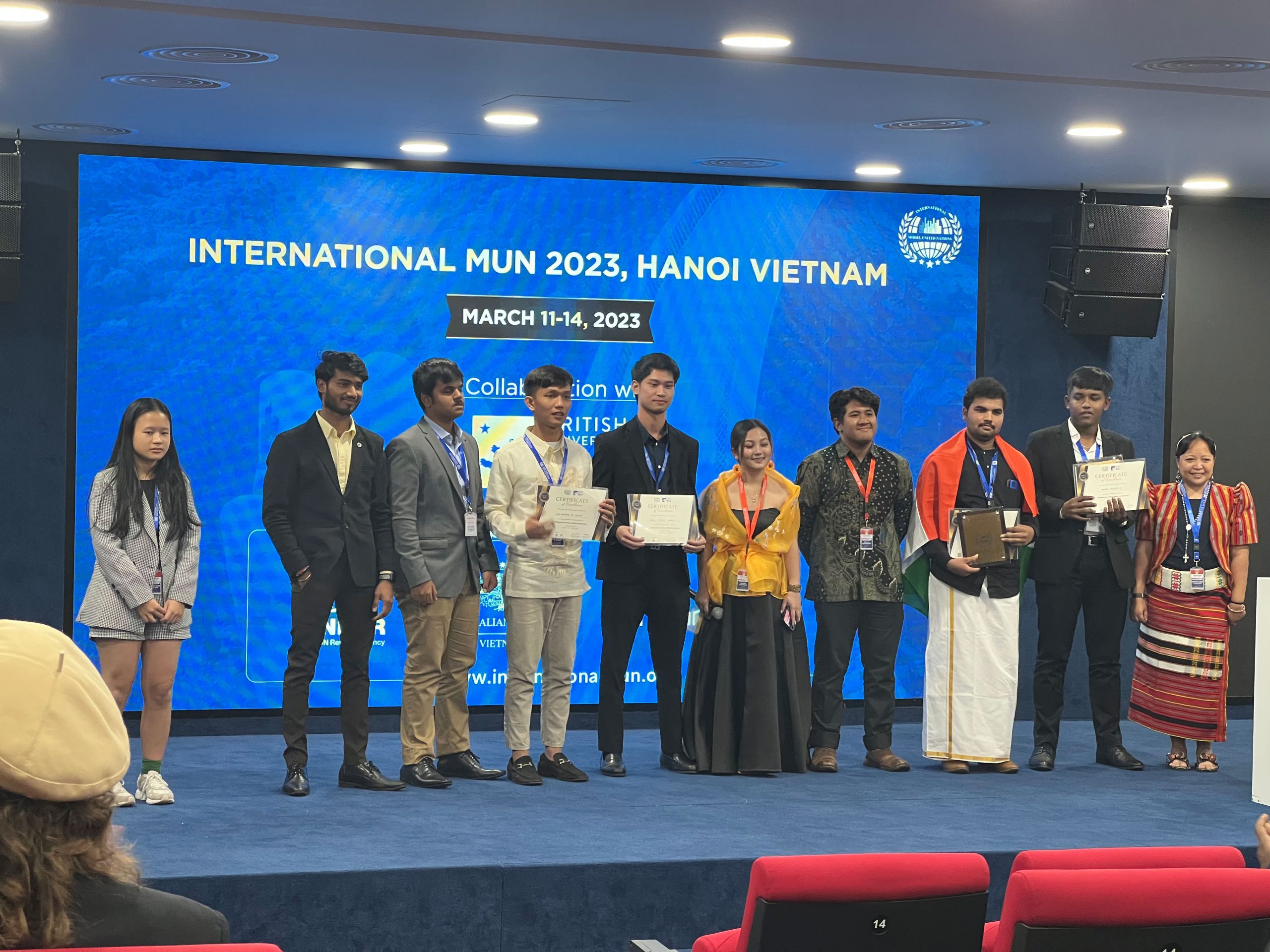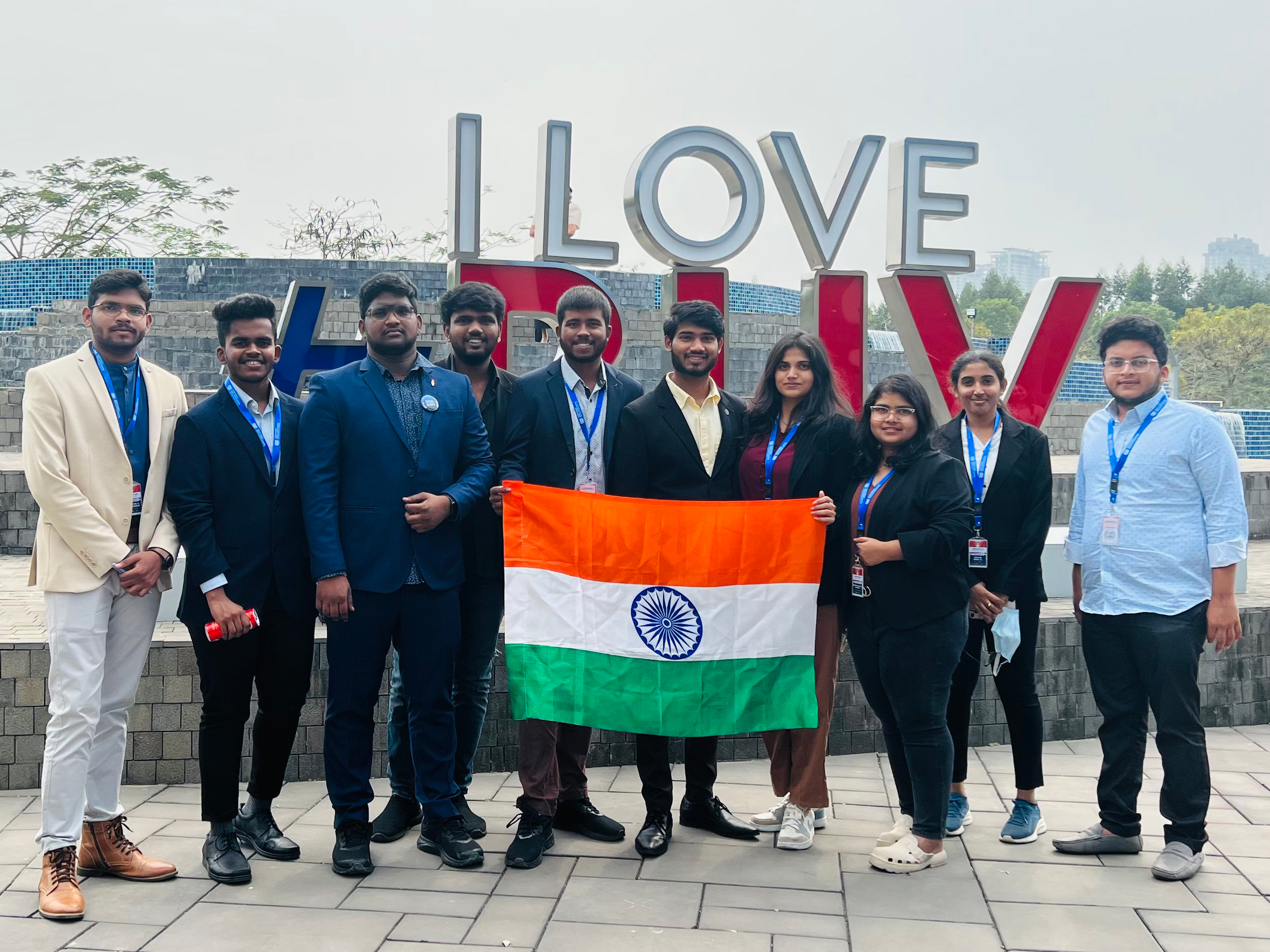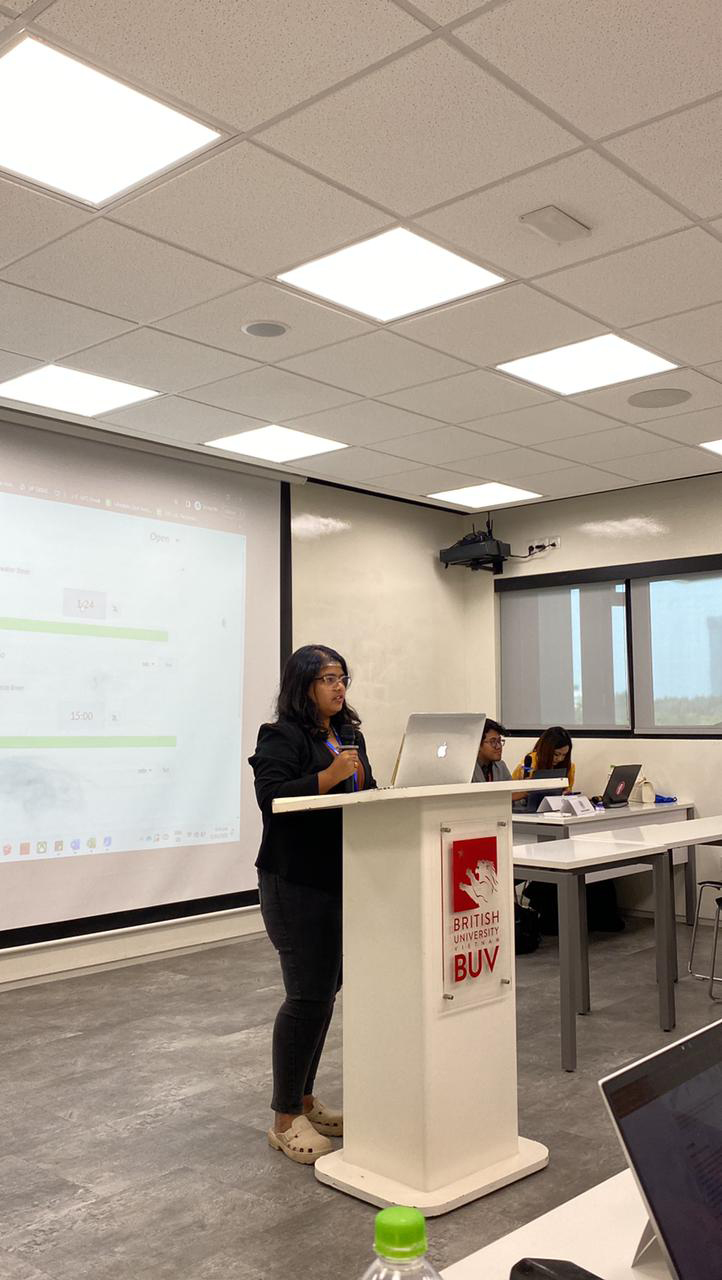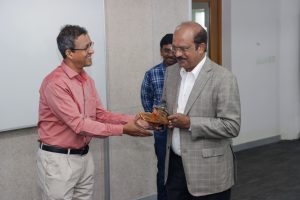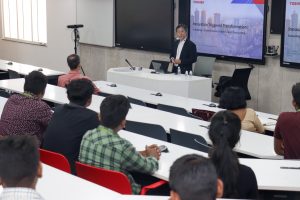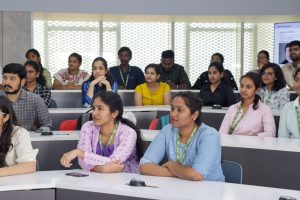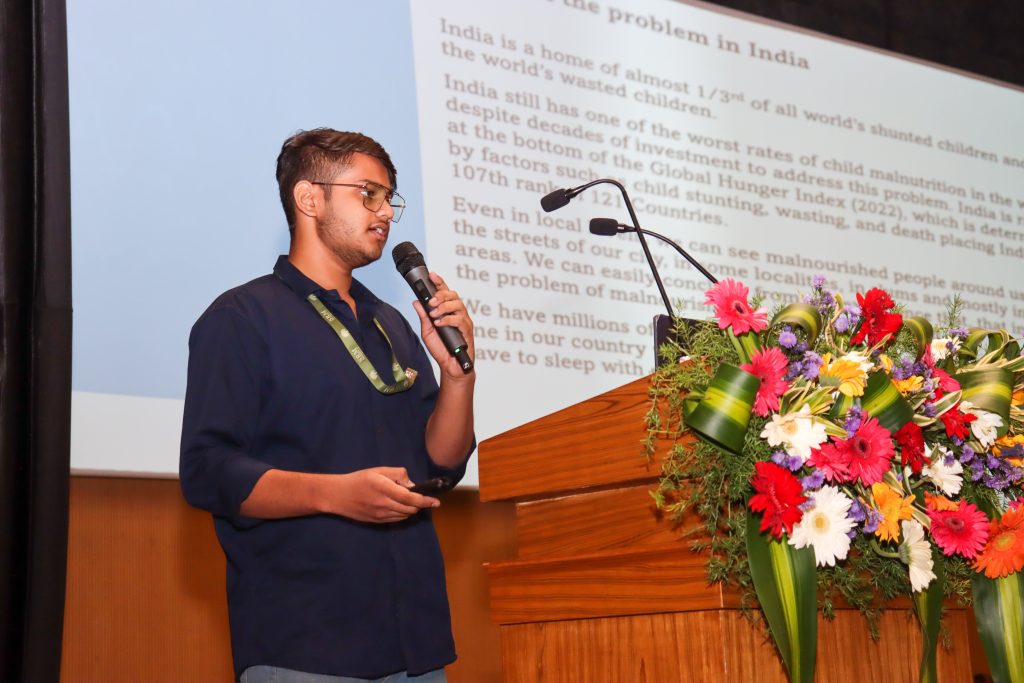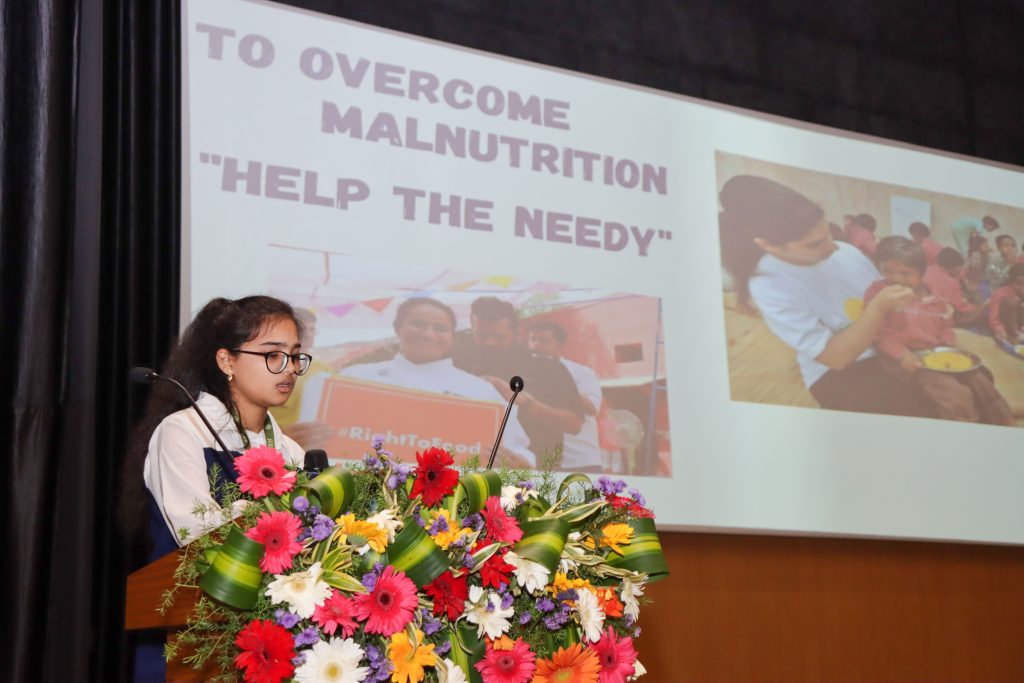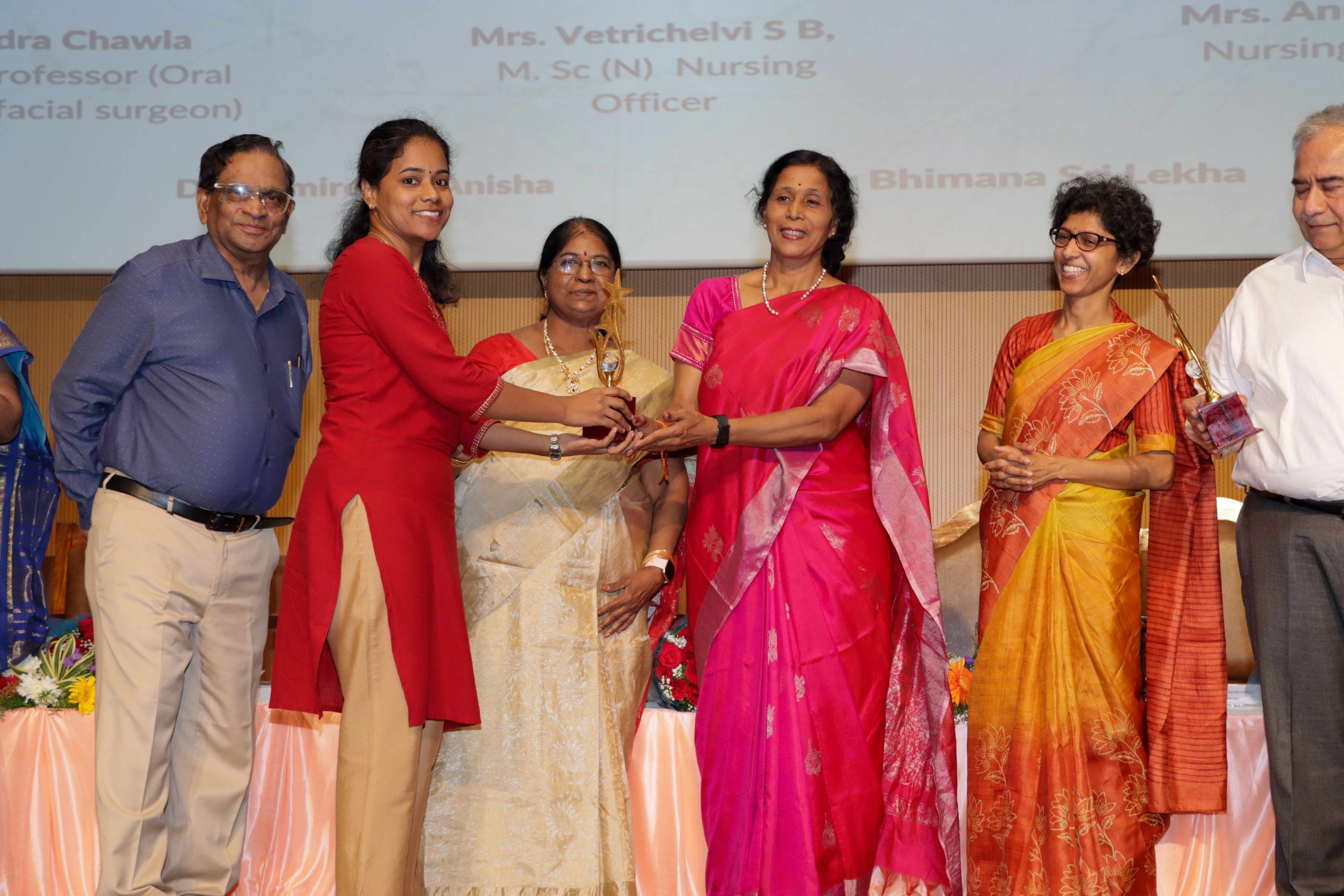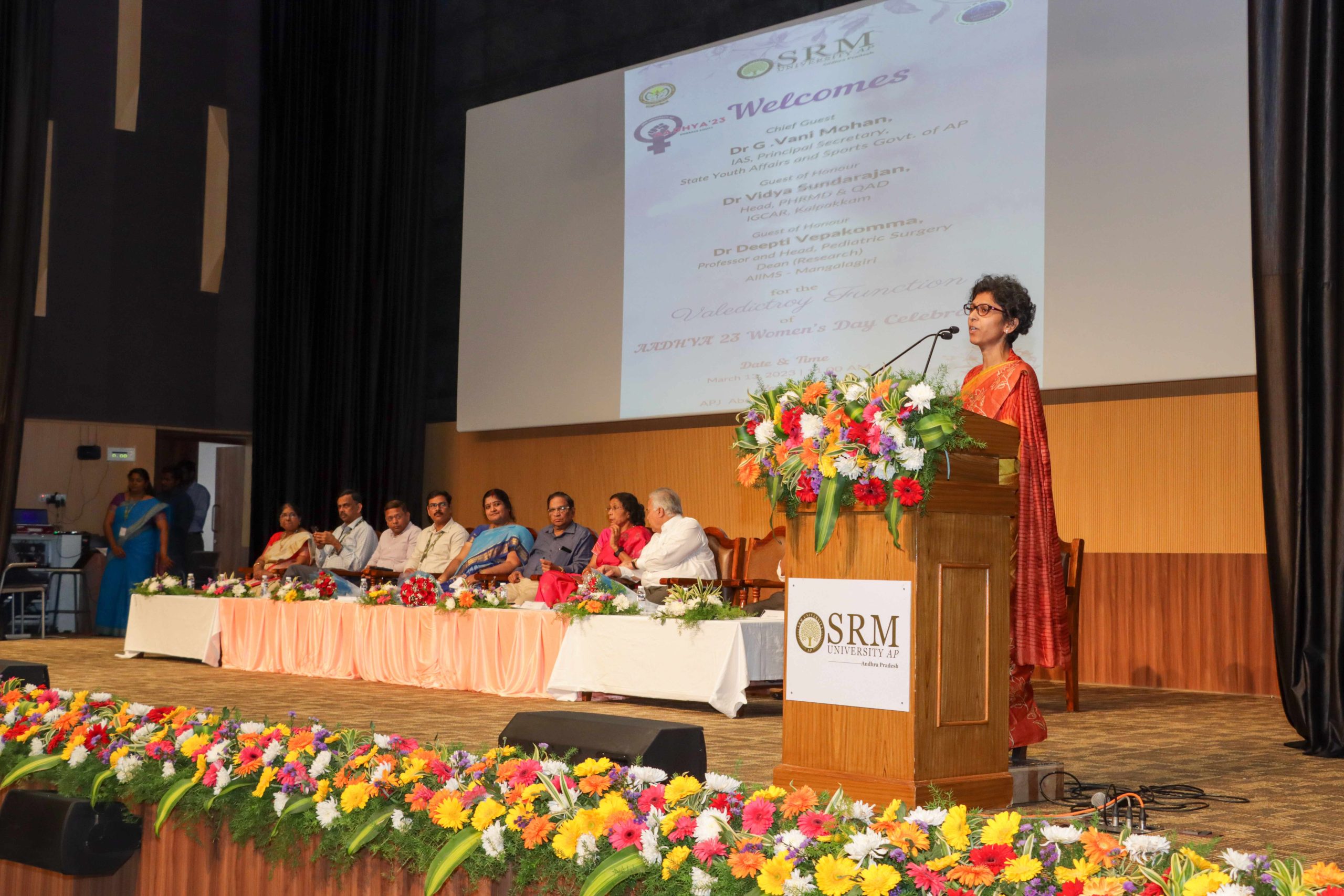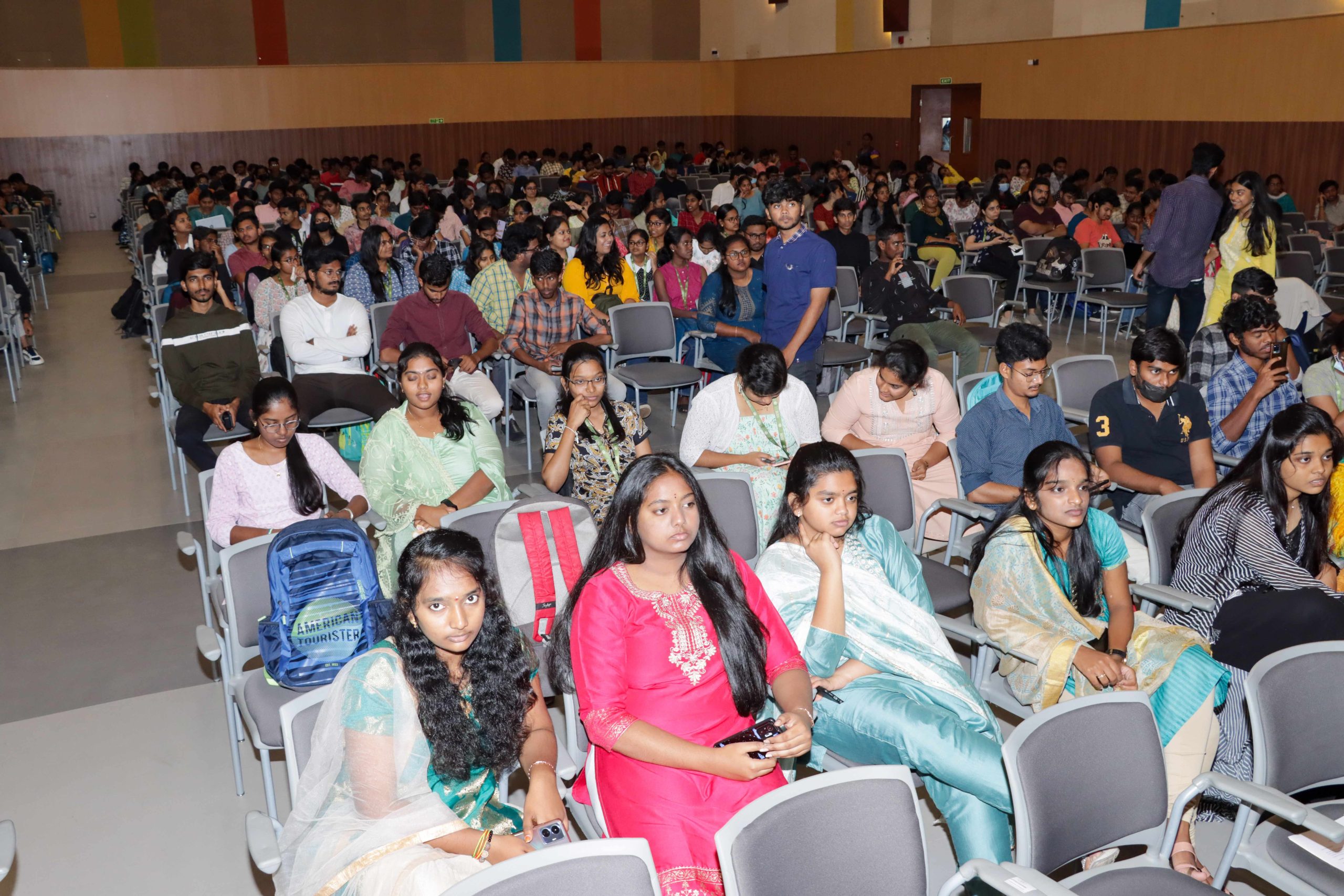SRM-AP All News
ALL News
- An appraisal of India’s comparative advantage in information technology exports April 3, 2023
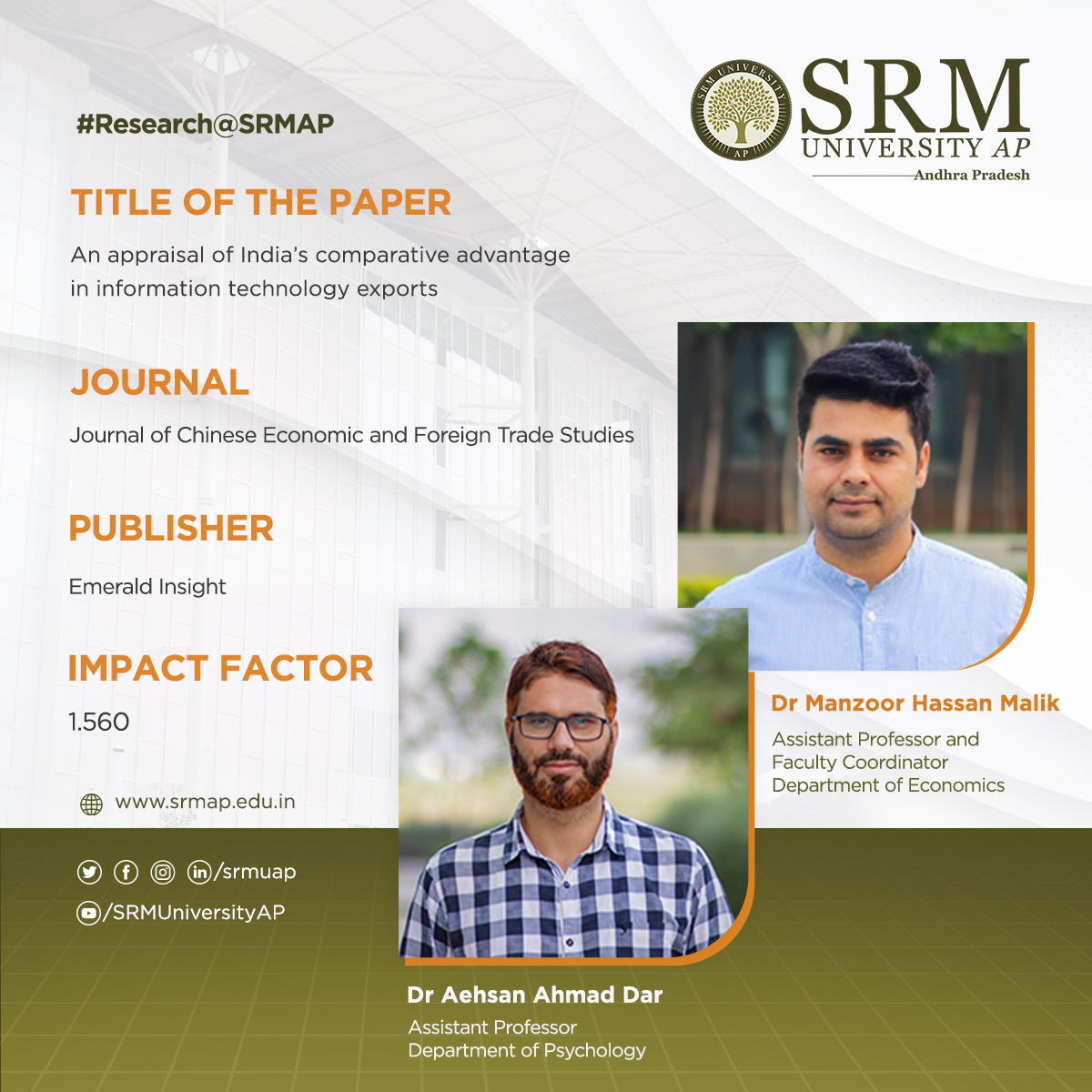 Researchers of the School of Liberal Arts and Social Sciences have worked on India’s comparative advantage in information technology exports with competing developing nations, including China, the Philippines, Malaysia, and Brazil. The latest paper published by Assistant Professor Dr Manzoor Hassan Malik, Department of Economics and Assistant Professor Dr Aehsan Ahmad Dar, Department of Psychology, has implications for attaining sustainability in IT export growth. It is suggested that policies are directed at enhancing the overall performance of the IT sector. The novelty of the present study lies in the estimation of India’s competitiveness in IT exports in relation to the group of reference countries, namely China, the Philippines, Malaysia, and Brazil. With its policy recommendations, this research is helping to shape the sustainability of the IT sector.
Researchers of the School of Liberal Arts and Social Sciences have worked on India’s comparative advantage in information technology exports with competing developing nations, including China, the Philippines, Malaysia, and Brazil. The latest paper published by Assistant Professor Dr Manzoor Hassan Malik, Department of Economics and Assistant Professor Dr Aehsan Ahmad Dar, Department of Psychology, has implications for attaining sustainability in IT export growth. It is suggested that policies are directed at enhancing the overall performance of the IT sector. The novelty of the present study lies in the estimation of India’s competitiveness in IT exports in relation to the group of reference countries, namely China, the Philippines, Malaysia, and Brazil. With its policy recommendations, this research is helping to shape the sustainability of the IT sector.The paper titled An appraisal of India’s comparative advantage in information technology exports was published in the Journal of Chinese Economic and Foreign Trade Studies with an impact factor of 1.560.
Abstract
The purpose of this study is to estimate revealed comparative advantage and Normalised Revealed Comparative Advantage (NRCA) indices of India’s Computer and Information Services (CIS) export competitiveness about Information Technology (IT) competing developing nations, such as China, Philippines, Malaysia and Brazil. Using annual data of total exports for CIS, transportation (TNS), travel (TVL) and insurance (INS) services under service categories of the balance of payment, the present study estimates the pattern of Comparative Advantage (CA) in India’s CIS exports with respect to IT competing developing nations such as China, Philippines, Malaysia and Brazil from 2000 to 2018. The choice of the study period is determined by the availability of consistent data on IT service exports of these nations. The study also estimates the export position of CIS export in comparison to India’s traditionally strong commercial services export of TNS, TVL and INS during the study period. Both indices showed that India had a strong CA in CIS compared to the selected nations, indicating India’s relative export performance to be stronger than that of China, Malaysia, the Philippines, and Brazil. The cross-service index showed that India’s relative specialisation level in CIS with respect to the world’s average specialisation level was stronger than its relative specialisation level in TNS, TVL and INS services. Furthermore, The NRCA cross-nation index showed that India’s NRCA index score has been declining since 2010 with respect to these nations, which implied a decline in the competitiveness of CIS. On the other hand, NRCA has increased in the case of the Philippines, Malaysia and Brazil for most of the period post-2010.
Continue reading → - Academic Trio Secures Second Prize at Aakaar Symposium April 3, 2023
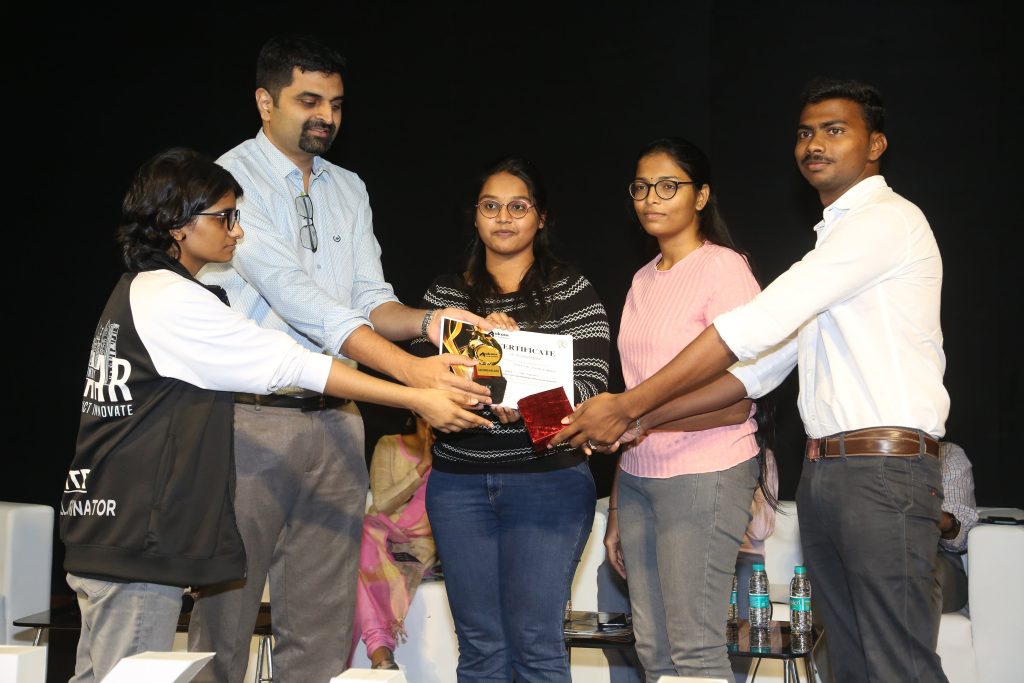
The students of SRM University-AP are nurtured in a conducive educational ecosystem that moulds them into competent candidates ensuring research and academic success at national and international frontiers. The Department of Civil Engineering proudly congratulates Tanoogna Mallarapu, Jonnalagadda Cheritha and Gade Venkata Reddy, Final year BTech students for securing the second prize in the Paper presentation contest at the prestigious Aakaar Symposium held by The Department of Civil Engineering, IIT Bombay on March 17 and 18, 2023. The trio presented their paper titled “Study of alternative flexible pavement design approaches suitable for Maine conditions” which was part of the students’ paid internship on an overseas (USA) research project funded by the Maine Department of Transportation, USA. A total of 47 groups participated in the contest from various domains of civil engineering from all over India. The academic cohort bagged the position of runners-up under the guidance and mentorship of the faculty advisor, Dr Uma Maheswar Arepalli, Assistant Professor, SRM Univeristy-AP.
About the Symposium
Aakaar is an annual symposium organized by the Department of Civil Engineering at IIT Bombay. The event comprises workshops, lecture series, panel discussions, industrial talks, exhibitions, and other activities. The festival also includes the Seventh International Civil Engineering Symposium (ICES), which aims to encourage young research enthusiasts to engage in rigorous research in civil engineering. ICES includes poster presentations, 3-minute thesis talks, city planning, and paper presentations. The symposium offers young and promising students enthusiastic about research the opportunity to present their work in front of experienced professors, civil engineering leaders, and industrialists.
The team had the incredible opportunity to meet renowned academicians and industrialists and learn about various projects in the civil engineering domain. Their work was highly praised by the judges with Dr Dharmaveer, Associate Professor, Civil Engineering Dept., IIT Bombay commenting that, “I enjoyed their presentation. I like their exposure to new tools and techniques, exploring new terms, learning, and understanding, which made them worthy.”
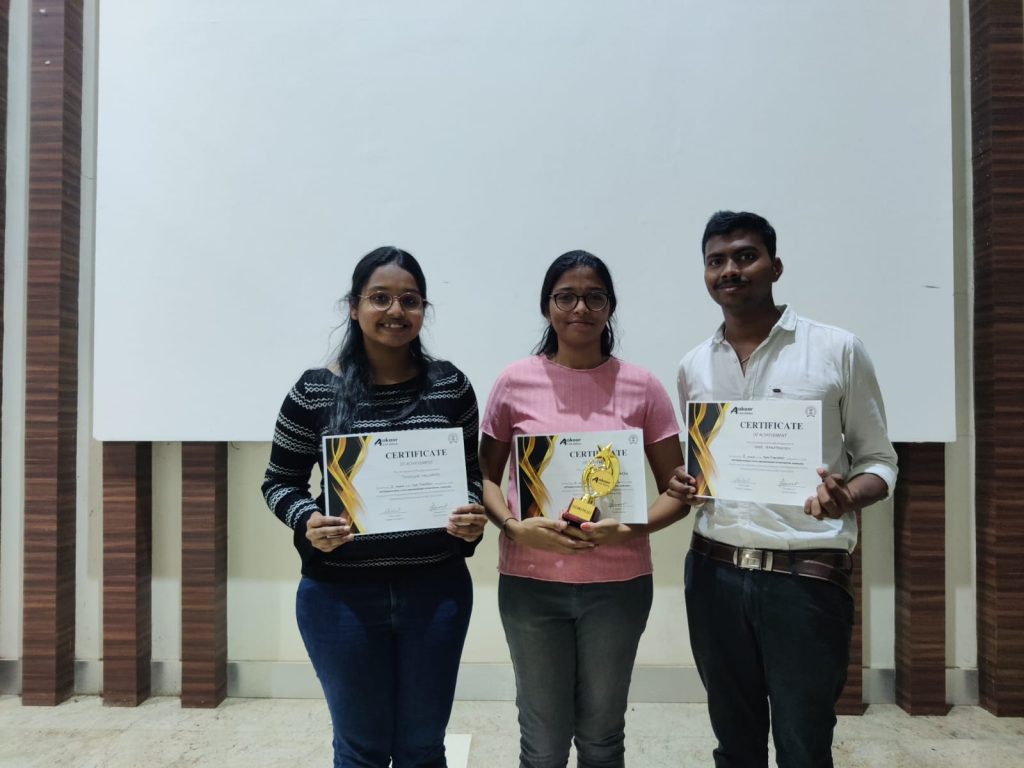
Tanoogna from the team stated her elevation in acquiring this success. “From the outset, I was motivated to participate in the competition and showcase my skills. Our advisor, Dr Uma Maheswar was always available to answer our questions, provide feedback on our work, and offer valuable insights that helped us refine our approach. His mentorship has played an integral role in our success, and we could not have accomplished this without his assistance. We are grateful for this opportunity and the platform that IIT Bombay provided us. It has been a fantastic journey, and I look forward to participating in more competitions and pushing my limits further,” said the young scholar.
Cheritha also expressed her gratitude towards her team’s accomplishment and the valuable experience the symposium had provided. “We were able to show case our work and was able to present it effectively and secured 2nd place in the category of paper presentation. Participating in this event is an incredible experience for me to gain knowledge. I am very grateful for my advisor and my teammates Tanoogna and Venkata Reddy for their hard work towards the accomplishment of the project and for being there in difficult situations.”
Venkat also commented that the event was beneficial in gaining knowledge and to present the project. The students thanked their mentor, Dr Uma Maheswar for the opportunities he had provided and his constant encouragement to strive for excellence.
Dr Uma Maheswar, Assistant Professor, Department of Civil Engineering, SRM University-AP also voiced delight in the incredible performance of his students. “From the beginning, I had the feeling that the topic has the potential to win this competition. But this team of students has made it a reality with their excellent technical and soft skills. It was a moment of immense pride and happiness for us in the civil engineering department when our students won the contest at a prestigious platform like IITB. Heartful congratulations to Tanoogna, Cheritha, and Venkat. I wish them the best of luck in their future career endeavours.”
Abstract of the Paper
AASHTOWare Pavement Mechanistic-Empirical Design (PMED) has been introduced to overcome the limitations of the AASHTO 1993 pavement design approach in the United States. However, due to the data requirements and work involved with accurate local calibration of PMED performance models, PMED seems challenging from a benefit-cost standpoint, especially for the states with low traffic volumes and limited resources. This study aims to understand the current flexible pavement design practices in the United States and recommend an alternative design approach for a state department of transportation. The methodology included an online survey with practitioners, a literature review, and a comparative analysis of selected alternative design approaches. Two approaches were chosen as an alternative design approach based on the online survey results, interviews, and literature review. One is updating layer coefficients for AASHTO 1993, and the second is developing its mechanistic-empirical (M-E) based pavement design approach for Maine. A layered elastic analysis using winJULEA or similar combined with standard performance empirical equations was considered a proposed M-E design tool for preliminary analysis. A sensitivity analysis using the range of design input values for Maine conditions and validation with a historical project database is planned. The presentation will discuss this study’s findings and the final recommendations derived from the comparative analysis.
Continue reading → - Alignment 360-The Leadership Workshop March 28, 2023
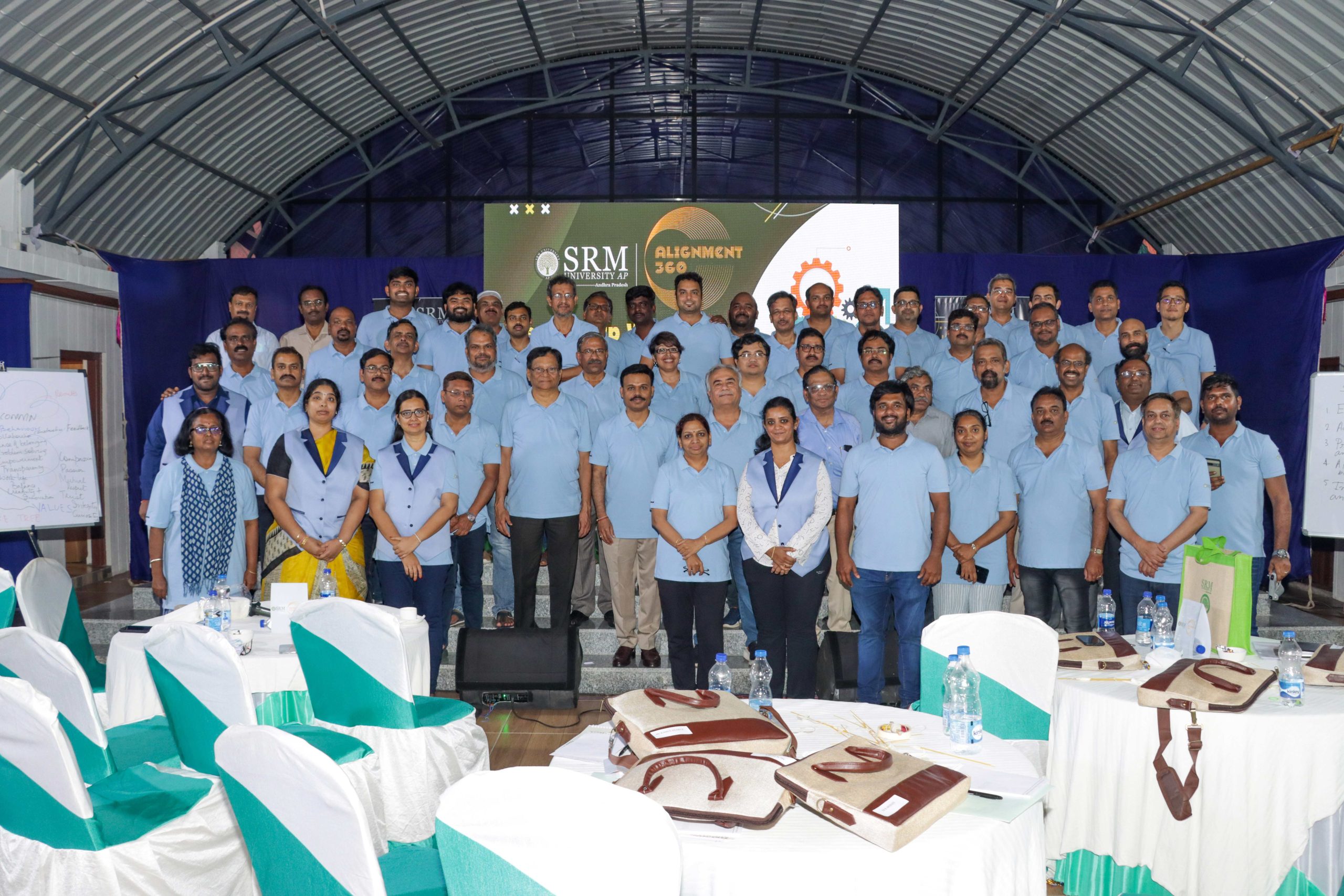
SRM University-AP conducted the first-ever three-day leadership workshop with the theme Alignment 360 to help individuals at the university align their values, goals, and behaviours holistically. 57 leadership team members from academic, non-academic, top management and the President’s office participated in the event held from March 17 to 19, 2023, at Riviera Beach Resort, Chirala. The workshop aimed to enable individuals and teams to clarify their core values and goals and develop an action plan to align their behaviour and decision-making with these values and goals.
Honourable Pro-Chancellor of SRM University-AP, Dr P Sathyanarayanan, expressed how glad he is over the workshop’s theme and put forth his vision and mission to locate SRM University-AP as the number one higher education institution in the upcoming years. Prof. Manoj K Arora, Vice Chancellor of SRM University-AP, kick-started the workshop by welcoming all and introducing the purpose of the workshop. He gave the task to the leadership team to formulate the next five years’ Strategic Goals and Operational goals.
The programme covered various aspects of alignment, including personal values, organisational culture, communication, leadership, and strategy. Through interactive exercises, discussions, and self-reflection, participants learn how to identify their values and goals, assess their current alignment, and develop strategies to improve alignment. The ultimate goal was to help individuals and organisations become more effective and efficient by aligning their behaviour with their core values and goals. By creating a shared understanding of values and goals, teams can work together more cohesively and make decisions that are consistent with their overarching mission and purpose. This, in turn, can lead to increased productivity, better morale, and improved outcomes.
Mr Chand and Mr Harish from Hum Consulting conducted the workshop and kept the audience enthralled and involved through various activities. Team building, Leadership roles, Target achievements, Conflict management and other activities were completed. The workshop concluded with a gala dinner and entertainment evening at the beach with the theme, Unwinding by the sea.
Continue reading → - Symposium on Cell and Molecular Biology (SCMB-2023) March 27, 2023
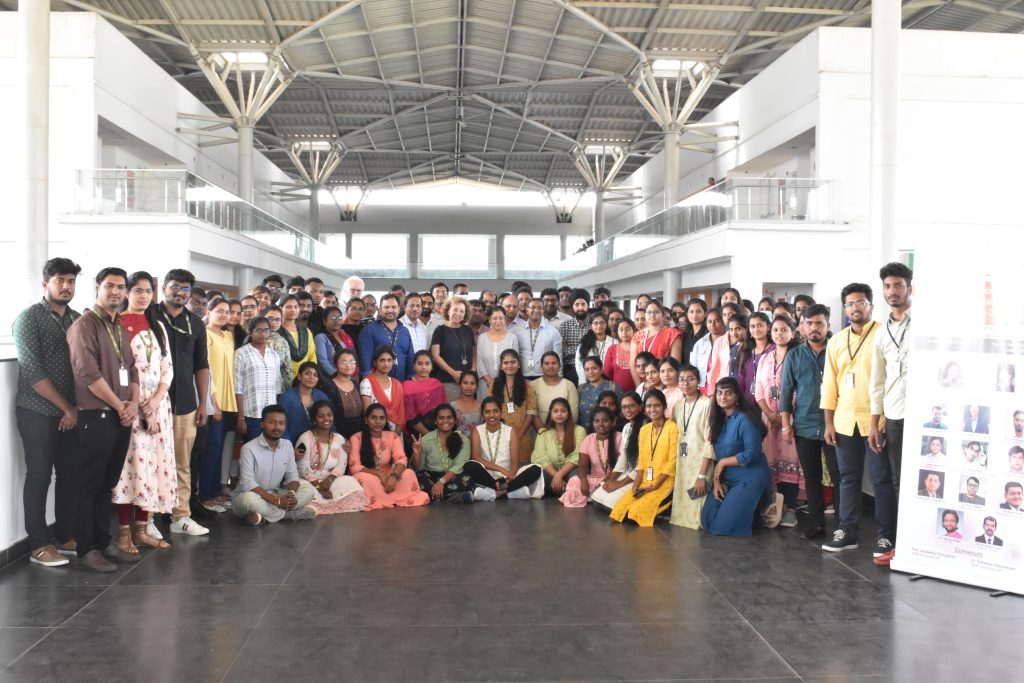
Cell and molecular biology is a vast field that encompasses many different areas of research, from genetics to immunology, from biochemistry to the study of single-cell sequencing. In order to emphasise the on-going research in cell and molecular biology, The Department of Biological Sciences organised a two-day Symposium on Cell and Molecular biology (SCMB-2023) from February 16 to 17, 2023, at SRM University-AP. The symposium consisted of insightful talks by eminent speakers from different parts of India and abroad, including the Hebrew University (Israel), Technion-Israel Institute of Technology (Israel), Biological Research Centre (Hungary), Weizmann Institute of Science (Israel), The AMR Insights (The Netherlands), Indian Institute of Science, IIT-Jodhpur, CSIR- Institute for Microbial Technology, IIIT-Delhi and more. A pre-symposium workshop on computational handling of biological data was another highlight of the convention.
Pre-symposium Workshop
In the past decade, the use of computational tools and algorithms to analyze data or use of artificial intelligence to model biological systems and predict how they will behave under different conditions have increased extensively. With an aim to give the basic knowledge of how this computational approach works, the Department of Biological Sciences invited Dr Gaurav Ahuja and Miss Aayushi Mittal to have a hands on session on:
- Building Machine Learning models leveraging biological datasets in R-programming.
- Using AutoML techniques for building classification and regression models (Biological datasets)
- Case study with Metabo Killer Python Package (Mittal et al. 2022, Nature Chemical Biology).
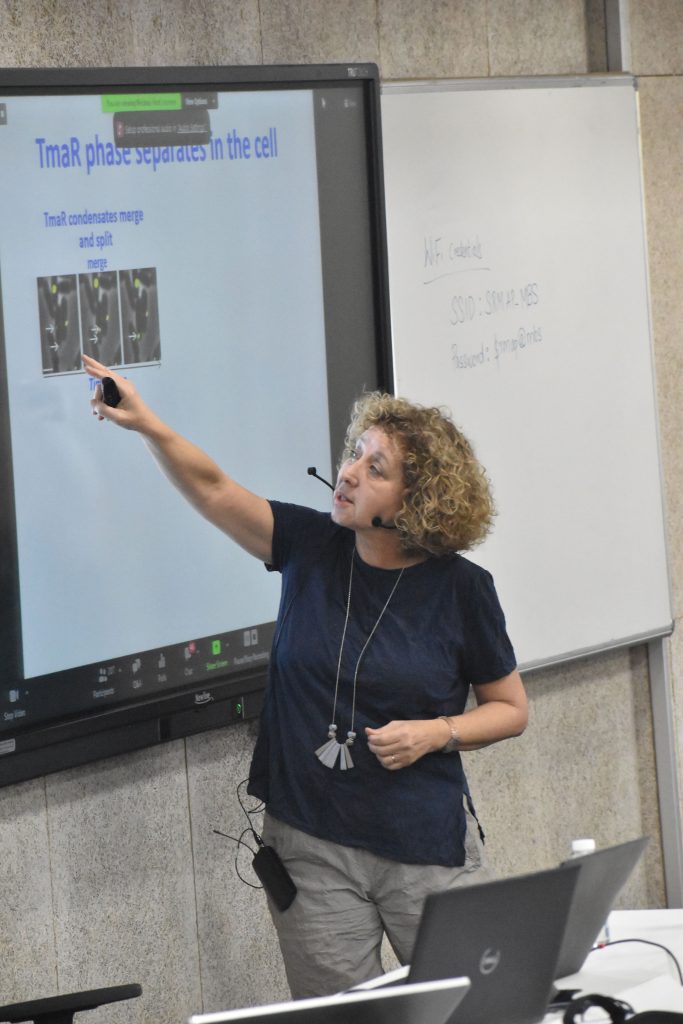
Symposium talks
Among all the eminent speakers the keynote speakers for the symposium were Prof. Orna Amster-Choder, Hebrew University of Jerusalem, Israel and Prof. Motti Choder, Technion- Israel Institute of Technology who gave an insight on gene expressions. With all the hot topics of cell and molecular biology starting right from ribosomal role in diseases, protein quality control in neurodegeneration and its therapy, the speakers also spoke about different model system and techniques, for instance bacterial nanotubes in intercellular interactions, use of Caenorhabditis elegans for host pathogen interaction, CRISPR-Cas3 systems for large-scale genome manipulation and gene discovery and Pseudouridine RNA modification. These insightful talks on data analytics and cell and its regulation not only provided the participants with brainstorming sessions, it also provided a platform to discuss and channelise new thoughts.
The conference was jointly convened by Prof. Jayaseelan Murugaiyan, Head of the Department of Biological Sciences, SRM University-AP, India and Dr Sutharsan Govindarajan, India Alliance Early Career Fellow and Assistant Professor at SRM University-AP. The symposium was held in a hybrid mode aimed to reach more budding scientists and established researchers. The target audience of the symposium included undergraduate students, postgraduate students, doctoral and post-doctoral scholars and researchers across the world. Participants from over nine institutes took part in the offline mode with a majority being undergrad students, whereas online participation witnessed registration from 327 institutes. The symposium had 120 offline participants and 572 online participants from 19 countries; 26 states and 3 union territories within India.
Continue reading → - Koecher-Maass Series have Infinitely Many Critical Zeros March 24, 2023
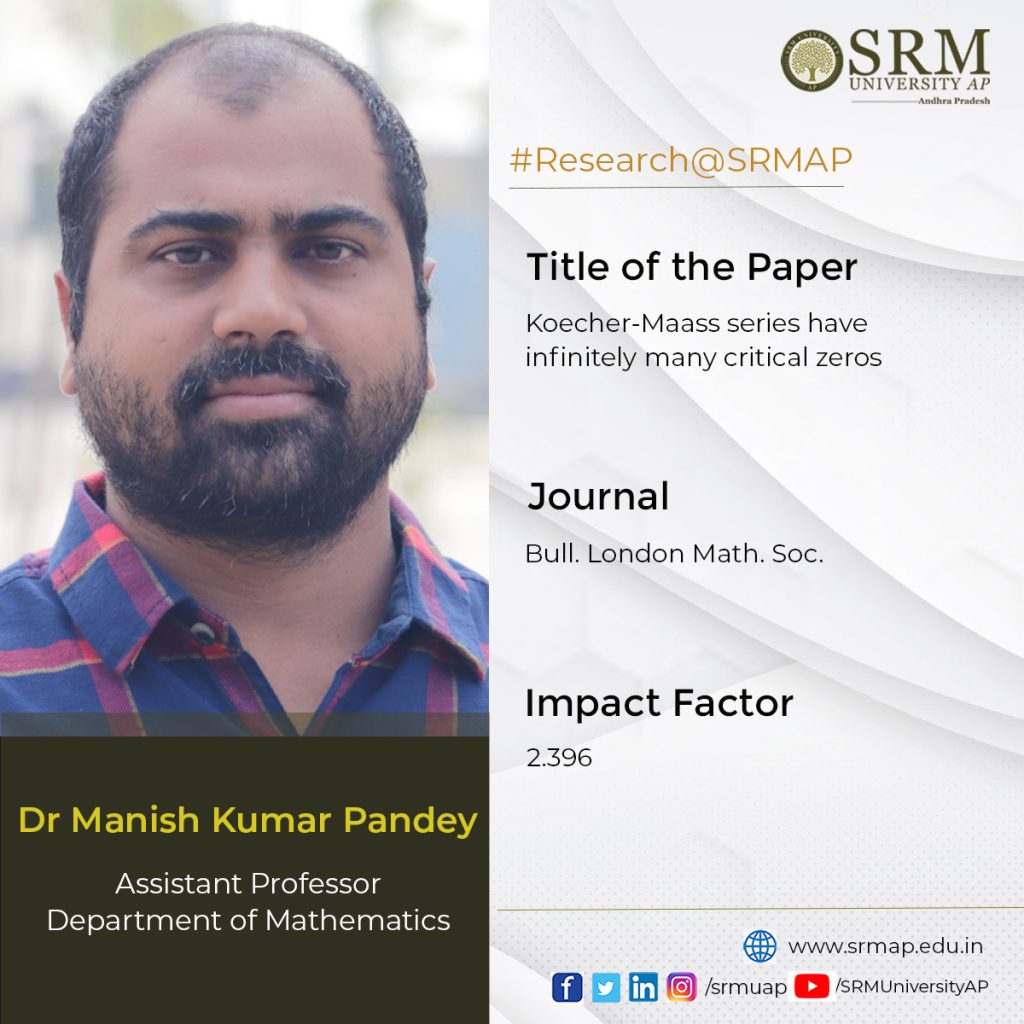
Dr Manish Kumar Pandey, Assistant Professor, Department of Mathematics, has published a paper titled, “Koecher–Maass series have infinitely many critical zeros” in the journal Bull. London Math. Soc. having an Impact Factor of 2.396.
Abstract
The article studies the zeros of the Koecher-Maass series associated with a Siegel cusp form of degree 2. It is proved that the Koecher-Maass series associated with a Siegel cusp form has infinitely many zeros on the critical line.
Practical implementation
It is well known that zeros of the Riemann zeta function have connections with prime numbers. In a similar fashion, one can state the behaviour of the coefficients of such series at primes. These are results of pure mathematical flavour and their immediate application will take time.
Collaborations
-
- Dr Jaban Meher, National Institute of Science Education and Research (NISER), Bhubaneshwar
- Dr Karamdeo Shankhadhar, Indian Institutes of Science Education and Research (IISER), Bhopal
-
- IMUN Appreciation for Students at International Conference in Vietnam March 23, 2023
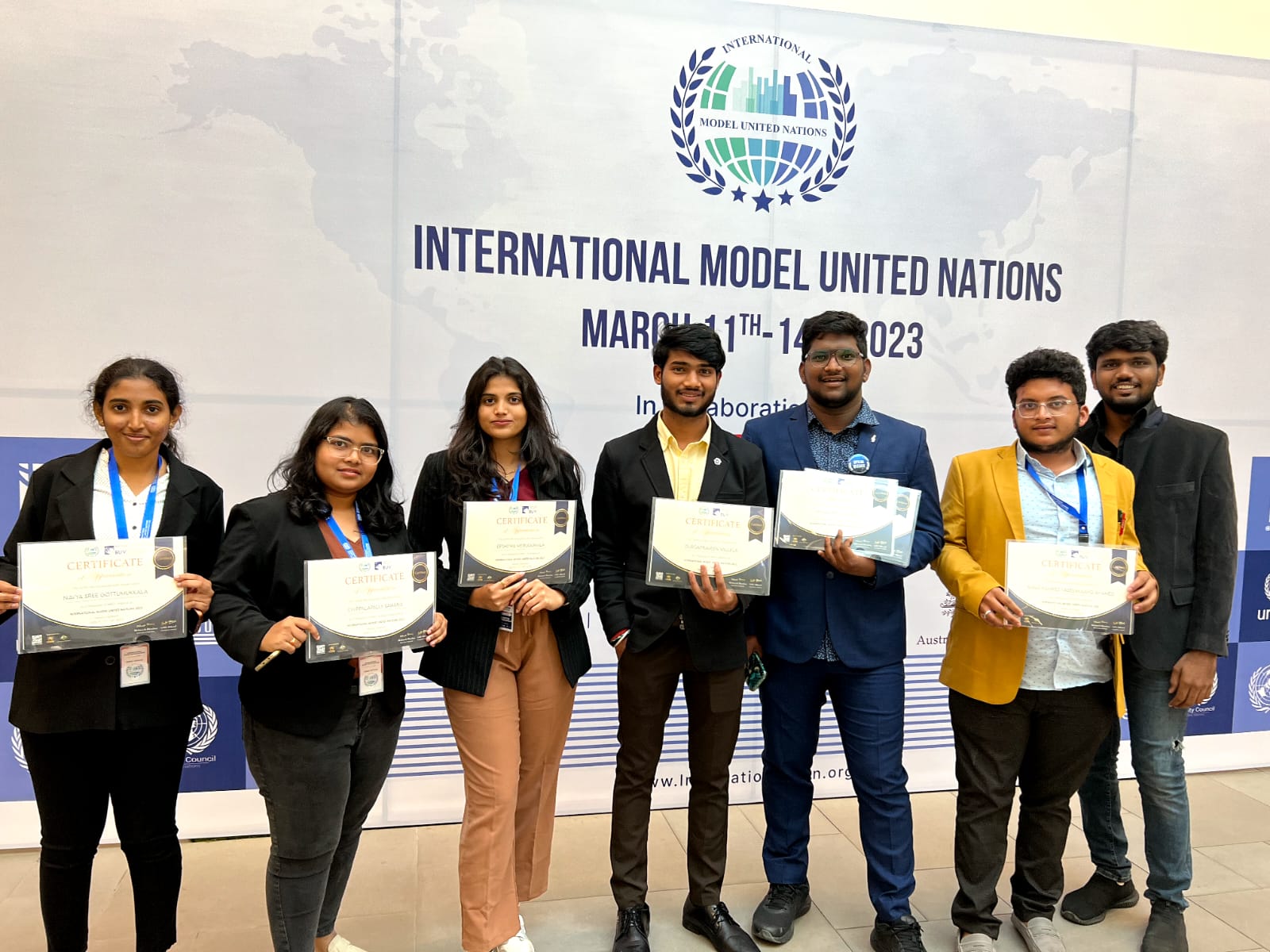 Students of SRM University-AP exhibited incredible talent at the conference organised by the International Model United Nations (IMUN) at the British University in Vietnam from March 11 to 14, 2023. The international conference has been conducted in collaboration with UNICEF, UNO, and UN Women. University students from 35 countries participated in the four-day long conference.
Students of SRM University-AP exhibited incredible talent at the conference organised by the International Model United Nations (IMUN) at the British University in Vietnam from March 11 to 14, 2023. The international conference has been conducted in collaboration with UNICEF, UNO, and UN Women. University students from 35 countries participated in the four-day long conference.Durgapraveen, Eeshitha, Sahana, Navya, Praveen Kumar, Venugopal, Satwik Suhas, Nitish, Rameez and Satwik Sai were the students of SRM University-AP who participated in the conference. Students prepared detailed draft copies on contemporary social issues and engaged in group discussions with students from different countries to showcase their potential. Along with students from other countries, they presented a report with details on social problems like cancer treatment, mental health problems, and child marriage and their solutions. The committee considered these the best presentations and handed over certificates of appreciation. Pro-Chancellor, Dr P Sathyanarayanan; Vice Chancellor, Prof. Manoj K Arora; Director of International Relations and Higher Studies, Dr Naga Swetha Pasupuleti; and others praised the students who made the varsity’s voice heard at the international conference.
The conference was part of the 4-day Vietnam Immersion Programme organised by the Directorate of International Relations and Higher Studies of SRM AP. The programme featured 10 students from the university. Diplomatic Talk from the embassies on recent global issues, MUN 101 and Training Sessions for the participants, Paper presentations on UNDP, WHO, UNSC, UNICEF, UNWoman & UNESCO, Social Night, cultural exchange, and networking with global participants, and Educational City Tour to explore the capital city, Hanoi were the highlights of the immersion programme.
Continue reading → - Maximising Electrochemical NH3 Production March 21, 2023
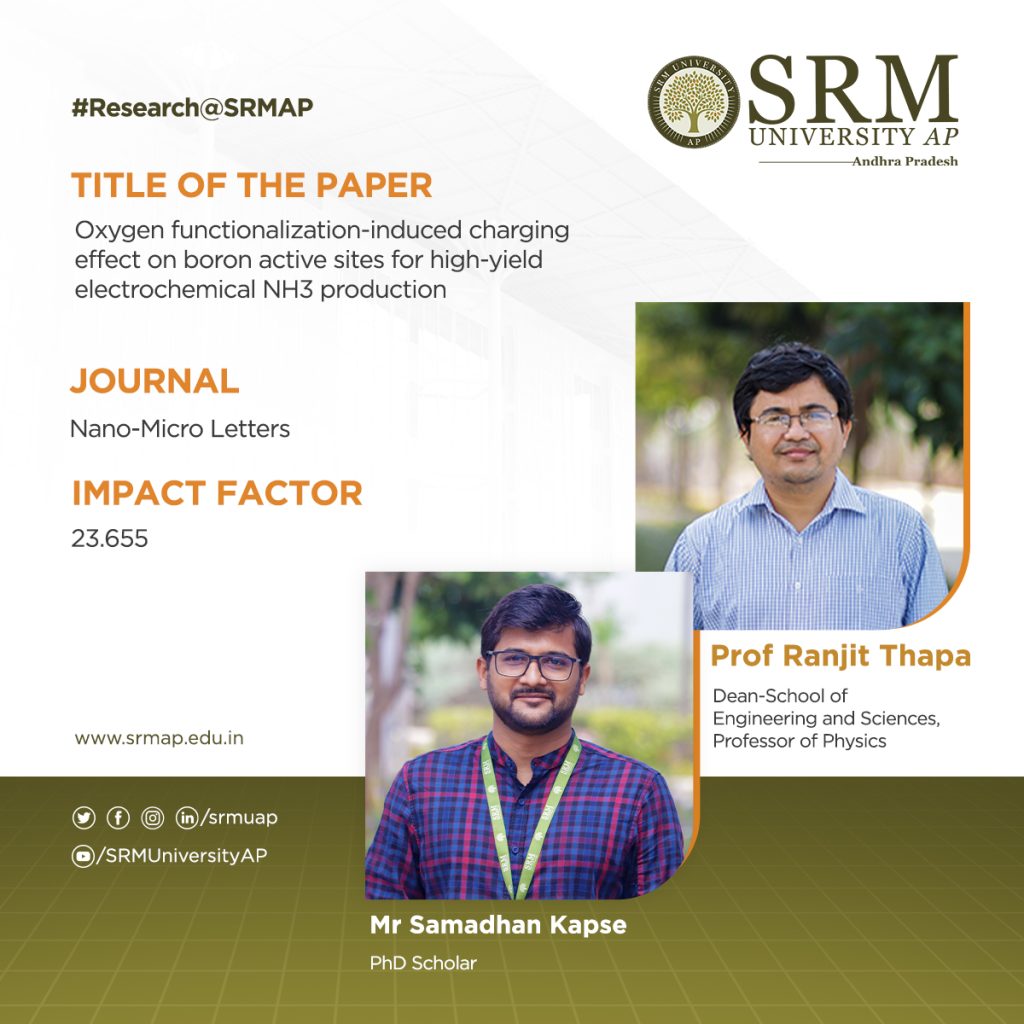
Significant measures have been undertaken to synthesise ammonia proficiently, the future renewable energy fuel for its wide range of applications in various sectors. On this account, a research paper titled “Oxygen functionalization-induced charging effect on boron active sites for high-yield electrochemical NH3 production” has been published by Prof. Ranjit Thapa, Professor, Department of Physics and his research scholar Mr Samadhan Kapse in the journal Nano-Micro Letters having an impact factor of 23.655.
Abstract
Ammonia has been recognized as the future renewable energy fuel because of its wide-ranging applications in H2 storage and transportation sector. In order to avoid the environmentally hazardous Haber–Bosch process, recently, the third-generation ambient ammonia synthesis has drawn phenomenal attention and thus tremendous efforts are devoted to developing efficient electrocatalysts that would circumvent the bottlenecks of the electrochemical nitrogen reduction reaction (NRR) like competitive hydrogen evolution reaction, poor selectivity of N2 on the catalyst surface. Herein, we report the synthesis of an oxygen-functionalised boron carbonitride matrix via a two-step pyrolysis technique. The conductive BNCO(1000) architecture, the compatibility of B-2pz orbital with the N-2pz orbital and the charging effect over B due to the C and O edge-atoms in a pentagon altogether facilitate N2 adsorption on the B edge-active sites. The optimum electrolyte acidity with 0.1 M HCl and the lowered anion crowding effect aid the protonation steps of NRR via an associative alternating pathway, which gives a sufficiently high yield of ammonia (211.5 μgh−1 mgcat−1) on the optimized BNCO(1000) catalyst with a Faradaic efficiency of 34.7% at −0.1 V vs RHE. This work thus offers a cost-effective electrode material and provides the contemporary idea about reinforcing the charging effect over the secured active sites for NRR by selectively choosing the electrolyte anions and functionalizing the active edges of the BNCO(1000) catalyst.
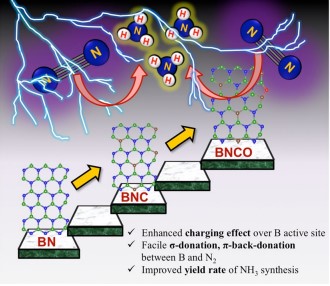
A brief summary of the research in layman’s terms
In summary, this work displayed the significant role of O and C doping within BN architecture to promote NRR on the edge B sites via an associative alternating mechanism. The gradual formation of the ideal structure was systematically studied by means of XPS and the electronic properties was investigated from NEXAFS. A greater impact was found on the charging effect of B centres due to O-functionalized edges that induced a greater charge density from B to the adsorbed N2, overcoming the potential determining steps for NRR. This work simultaneously highlighted the importance of the choice of electrolyte, where in 0.1 M HCl our catalyst BNCO(1000) yielded 211.5 μg h−1mgcat−1 of ammonia at −0.1 V vs RHE with a FE of 34.7%. It was experimentally found and theoretically supported that the bulky anions in H2SO4 and H3PO4 blocked the B active sites by a Lewis acid-base interaction between the B sites and the O ends of the anions, hence not suitable for this class of materials. Thus, the present work offered an overall idea of catalyst designing and the medium to retain a high and consistent NRR performance.
Social implications of the research
Nitrogen reduction reaction (NRR) performed electrochemically is regarded as a green and legitimate approach to ammonia synthesis and it has been intrinsically brought into the limelight by the worldwide research community, not only because of the immense use of ammonia in the agriculture and transportation sector but also due to urge to resolve the fallacies associated with the process. Primarily, the eternal problem persisting with NRR is the predominance of the combative hydrogen evolution reaction (HER) at the same potential range, which overpowers NRR over most of the catalyst surfaces, resulting in poor yield and Faradaic efficiency (FE) of ammonia production. Researchers thus majorly focus on varied catalyst development, which includes several strategies: (a) Selectivity of elements that would prefer binding with N2 over protons, (b) Blocking the HER active sites, (c) Phase-selective material designing, inhibiting HER at the active surface, (d) interface-engineering that would deviate the HER pathway inducing better Faradaic efficiency for NRR. Although either 1st-row transition metals or semimetals are regarded as more suitable candidates for NRR, a metal-free approach is rather preferred for the cost-effectiveness and simplicity of the process. Boron (B)-based electrocatalyst in this respect can act as a strong contender. The research also posits that Density functional theory is useful for the molecular level understanding to unveil the performance of different catalytic reactions.
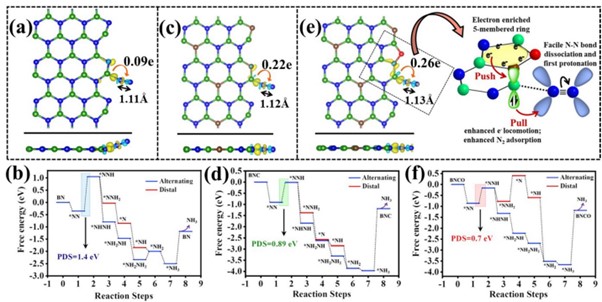
Collaborations
- Ms Ashmita Biswas, Institute of Nano Science and Technology (INST), Sector-81, Mohali, Punjab 140306, India
- Mr Ramendra Sundar Dey, Institute of Nano Science and Technology (INST), Sector-81, Mohali, Punjab 140306, India
- “Your Career in Business”- Insights from Mr Takashi Ishikawa March 16, 2023
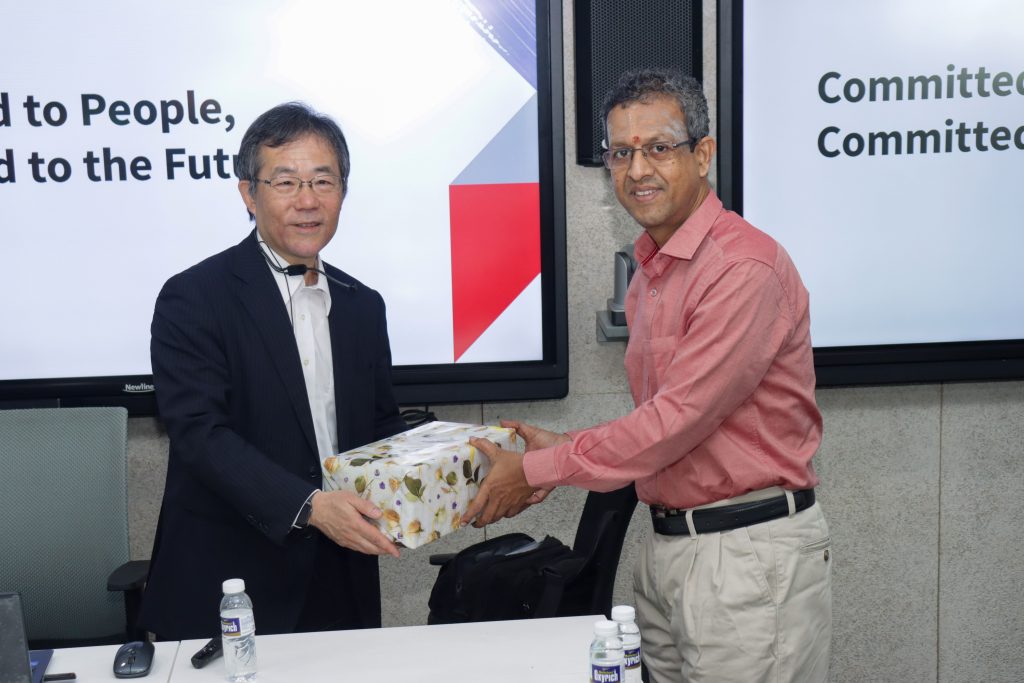
Visits from Big Techs offer an opportunity for young and potential students of management to develop future aspirations and shape their careers. The Paari School of Business organised a visit from the Tech Giant Mr Takashi Ishikawa, the Managing Director and Chairman of Toshiba Software India on March 06, 2023. The experienced business leader interacted with students and shared insight on prospective career opportunities and employment strategies for budding business managers. He encouraged students to explore different career paths and pursue their passions and interests. Mr Ishikawa emphasized the importance of continuous learning and development and encouraged students to pursue lifelong learning and stay current with the latest industry trends and technologies.
Mr Ishikawa also discussed the company’s recent developments and initiatives, including its focus on digital transformation and the development of innovative technologies. In addition to discussing the company’s initiatives. The visit has proved to be a beneficial opportunity for students to learn about the regional ecosystem of Toshiba Software and gain insights on career development from a seasoned industry leader. His emphasis on collaboration, innovation, and lifelong learning serves as a valuable reminder of the skills and qualities necessary for success in today’s dynamic business environment.
Continue reading → - Workshop on Sustainable Development at SRM University-AP March 15, 2023
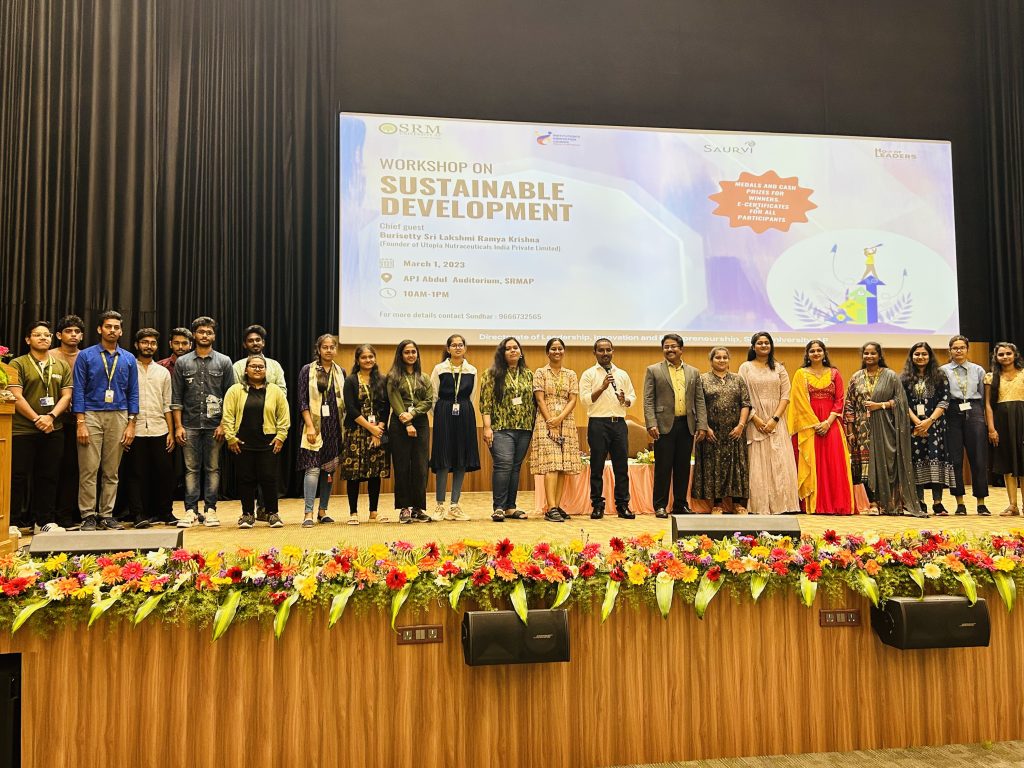
Sauri, the woman leadership and entrepreneurship student community of SRM University-AP, in association with the Directorate of Entrepreneurship and Innovation conducted a Workshop on Sustainable Development on March 01, 2023 to promote an insightful discourse on SDGs and develop strategies advocating green development. The workshop was an ideal platform facilitating knowledge and insight into the challenges on formulating a development plan that meets the needs of the present, without compromising the ability of future generations to meet their own needs. Student presentations on the problem statements regarding Sustainable development were a major highlight of the workshop.
The Chief Guest of the workshop Mrs Ramya Krishna Burisetty gave a brief description and a presentation regarding her startup venture and sustainable development. She also gave a comprehensive overview on her journey, background work, ideology behind her startup, ways to build start-ups and the technology of fortifying foods. Being a women entrepreneur, she also motivated students by providing them with guidelines for the funding sources available for women entrepreneurs.
The workshop was attended by 350+ students from various colleges. Students from VVIT, VIT-AP, VR Siddhartha Engineering College, NRI Institute Of Technology and KL University actively participated in multiple activities organised as part of the workshop. A quiz was conducted as well as presentations based on their ideas on the given problem statements. Mr Dinesh and team from VVIT bagged the first prize and Ms Sindhuja from SRM AP took home the second prize in the quiz competition. The third prize was awarded to two teams, Mr Eeshwar from NRIIT and Ms Ridhi from SRM AP. The students gained knowledge about how to build a startup keeping in mind the goals of Sustainable development. The top five participants with high scores and accuracy were also awarded with deserving prizes.
Continue reading → - Meeting the Immediate Healthcare Needs of the Underprivileged March 14, 2023
 A week-long International Women’s day celebration, AADHYA’23, concluded with a valedictory function held on Monday, March 13, 2023. AADHYA’23 lauded the strength and significance of women in society through multiple impactful activities. Dr G Vani Mohan IAS, Principal Secretary, State Youth Affairs and Sports, Govt of Andhra Pradesh; Dr Vidya Sundarajan, Head, PHRMD & QAD, IGCAR Kalpakkam; Ms Menaka, Head, RAMS, RESD, SQRMG, IGCAR Kalpakkam; and Dr Deepti Vepakomma, Professor and Head, Pediatric Surgery Dean (Research) AIIMS, Mangalagiri, were the dignitaries who graced the occasion with their valuable presence. “Every individual desires to go beyond their limits to achieve what they dream, and that’s why we leave no stone unturned in making the endeavours of the women of SRM AP ground-breaking,” said Prof. Manoj K Arora, Vice Chancellor of SRM AP, while addressing the gathering.
A week-long International Women’s day celebration, AADHYA’23, concluded with a valedictory function held on Monday, March 13, 2023. AADHYA’23 lauded the strength and significance of women in society through multiple impactful activities. Dr G Vani Mohan IAS, Principal Secretary, State Youth Affairs and Sports, Govt of Andhra Pradesh; Dr Vidya Sundarajan, Head, PHRMD & QAD, IGCAR Kalpakkam; Ms Menaka, Head, RAMS, RESD, SQRMG, IGCAR Kalpakkam; and Dr Deepti Vepakomma, Professor and Head, Pediatric Surgery Dean (Research) AIIMS, Mangalagiri, were the dignitaries who graced the occasion with their valuable presence. “Every individual desires to go beyond their limits to achieve what they dream, and that’s why we leave no stone unturned in making the endeavours of the women of SRM AP ground-breaking,” said Prof. Manoj K Arora, Vice Chancellor of SRM AP, while addressing the gathering.A Free Health Camp organised by the Health Centre and NSS Cell of SRM AP was the major highlight of the women’s day celebrations, providing free medical check-ups and consultations to the attendees for one week. The camp was conducted for all women faculty, staff and workers of the university and women in the surrounding villages such as Neerukonda, Kuragallu and Nidamarru. Experienced medical professionals led the medical camp that allocated comprehensive healthcare services such as general check-ups for Blood Pressure, Sugar, Oral Cancer, Breast Cancer etc.
The President of Neerukonda village expressed how such health camps help meet the immediate healthcare needs of the underprivileged communities in rural areas, as the services offered are diagnostic, preventive and referral. “Camps like this help us to get proper medical treatment for free without having to travel 2 hours to Guntur or Vijayawada. It allows housewives and elder citizens to resolve their health concerns without the strain of travel and medical expenses,” added Suvarnalaxmi, a resident of the Neerukonda Village. Over 70 individuals who participated in the camp were between the age group of 45 to 65. AADHYA’23, held from March 7 to 13, 2023, was a huge success, providing much-needed medical services to the rural outskirts of the university.
Continue reading →


